This is the most comprehensive guide to understanding the proper use of color psychology in logo design and marketing.
It is specifically focused on brand design and its fundamental role in branding management to define the concept and personality of a corporate identity.
We'll explore in detail, with practical examples of famous logos, how colors can trigger behaviors in people, and how we can leverage this information to strengthen a brand's identity.
We will see that there are colors that evoke different sensations, flavors, smells, temperatures, climates, moods, places, memories, and all kinds of perceptions.
For all this and above all, in this post we are going to awaken your senses!
I invite you to discover them.
What is color psychology?
Color psychology is the study of how colors affect and can influence people's moods, behavior, emotions, perceptions, and reactions.
It is closely related to color theory, which focuses on the combination of colors and their application in art and design. and how colors interact with each other, creating visual harmony and aesthetic effects.
In this post, we'll focus on both disciplines together and analyze how different colors trigger different psychological responses and how they can be used to influence purchasing decisions and brand communication with consumers.
A world of sensations
Colors evoke different emotions and associations that can have a significant impact on our mood, allowing brands to create a visual identity that connects with their target audience and conveys specific messages.
For example, warm colors like red and yellow can evoke feelings of energy and excitement, while cool colors like blue and green can generate feelings of calm and tranquility.
The reaction to colors is a series of primitive responses that have been studied over time.
Some colors attract, others repel, some motivate and others relax, but they all contain meanings and sensations that are not indifferent to us.
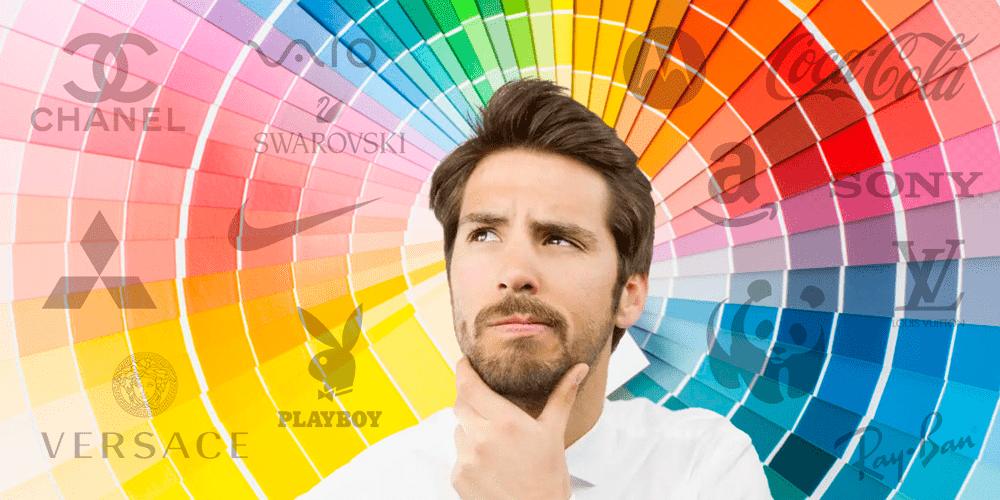
Applications of color psychology
In marketing and advertising, colors are a fundamental tool for influencing purchasing decisions and creating emotional connections with consumers.
Color can affect how buyers perceive different brands and products, so it's crucial to choose shades that align with your business goals and target audience.
In graphic and interior design, color choices can affect how a space or product is perceived.
Color psychology plays a crucial role in people's perception and emotional response to a brand.
By understanding the meanings and emotions associated with each color, designers can use this information to create impactful designs that create a deeper connection with their audience.
The goal is to make our audience feel something about our image, and visual perception is a key factor in achieving this, as it will determine much of the trust they feel in our brand and motivate them to make a purchase.
Therefore, color is a factor we must take into account when choosing a product, as it will guide the user toward a purchase, or perhaps toward abandonment.
I recommend you read my post The most complete guide to understand logos
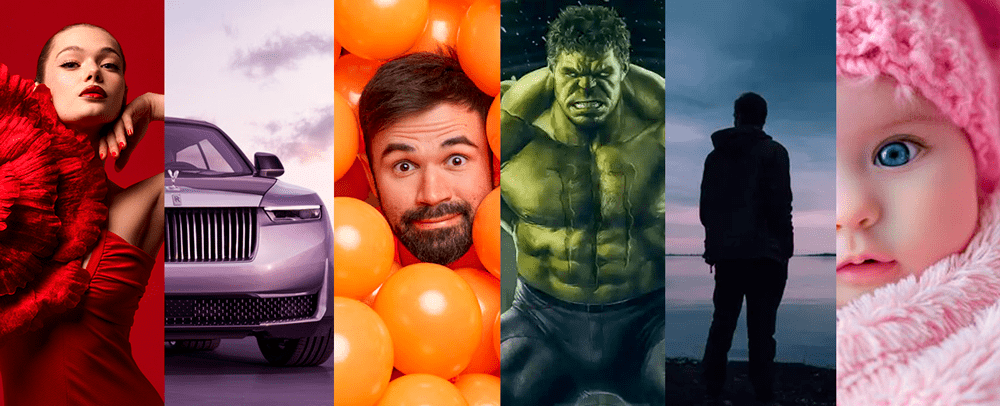
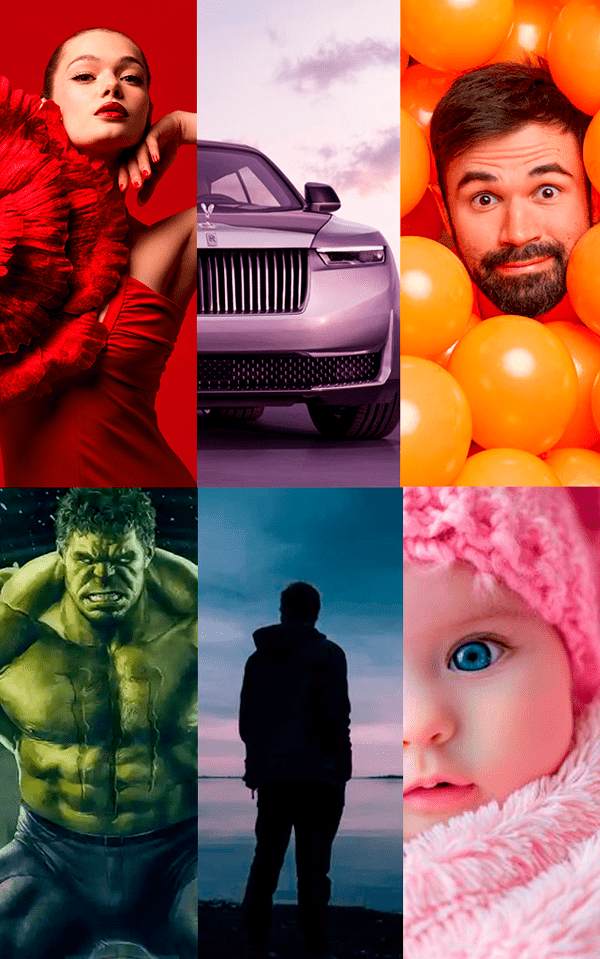
Why should we use color psychology in branding?
First impressions are what count, and when it comes to a brand, that first impression can be shaped by a variety of factors, one of which is color.
Colors are crucial to creating logos, packaging, and brand visuals.
They are capable of evoking specific emotions in consumers and generating a deeper connection with them, which we call "emotional marketing."
In website and app design, colors are essential for creating satisfying user experiences and optimizing navigation (UX/UI).
Likewise, color psychology can help create a cohesive social media presence and appeal to different audiences.
Let's talk about Branding
Branding involves not only the graphic design of a brand but also defining all the characteristics of its personality, values, objectives, mission, concept, and communication strategies.
Colors should always reflect the brand's personality and values.
Therefore, color psychology in branding is a very powerful tool that can influence a brand's perception, how consumers see and remember it, and 85% of your customers' purchasing decisions.
Using the right colors in your brand identity can help us establish an emotional connection with our audience.
Choosing colors in your branding strategy is no small task.
By using color psychology to our advantage, we will be able to enhance a brand's visual impact, influence its customers' emotions, and stand out from the competition.
I recommend you read my post Rebranding: The importance of redesigning a brand

Brand recognition
Colors play an essential role in brand recognition.
When we think of McDonald’s, we probably immediately picture the distinctive red and yellow of its logo.
This instant association is the result of years of consistent use of color in their branding strategy.

Differentiation
In a saturated market, standing out is essential.
Choosing colors that are different from the competition can help a brand stand out and be memorable.
For example, if all of our competitors use warm colors, opting for cool colors can make your brand stand out.
I recommend you read my post Personal branding: Benefits of having a logo with your own name
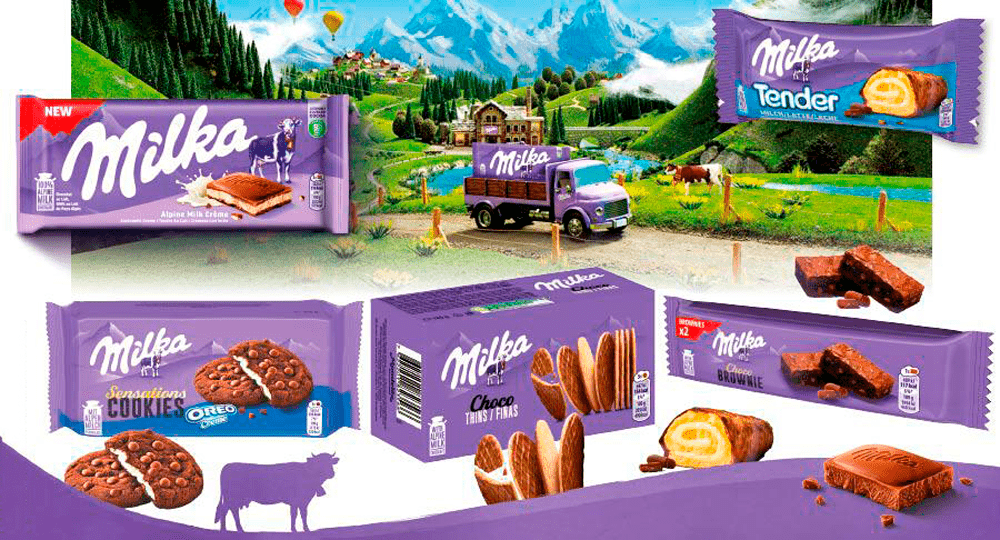
The brand color and the personality of the company
When we think of iconic brands like Coca-Cola, Starbucks, or Facebook, the first thing that probably comes to mind is their colors: vibrant red, calming green, or trustworthy blue.
This is no coincidence.
The color of a company's logo design is a powerful tool that communicates values, emotions, and even the essence of its identity.
In a world where first impressions are crucial, choosing the right tone can make the difference between being memorable or going unnoticed.
I recommend you read my post 80 famous logos with hidden messages
When the colors call...
Often, the choice of a brand's color goes unchallenged, whether it's the nature of the product they represent or their name itself, which has a strong connection to certain colors, beyond the connotations we wish to give them.
One such case is when a product contains a color in its own name, or indirectly alludes to one.
Therefore, the choice of the logo's primary color is almost obligatory to target that tone, to mentally emphasize the relationship between the verbal pronunciation of the brand and the color it represents.
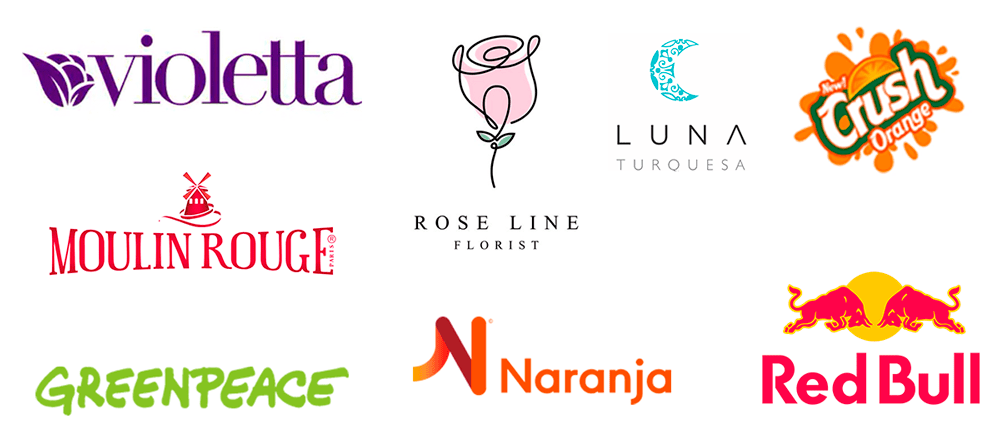
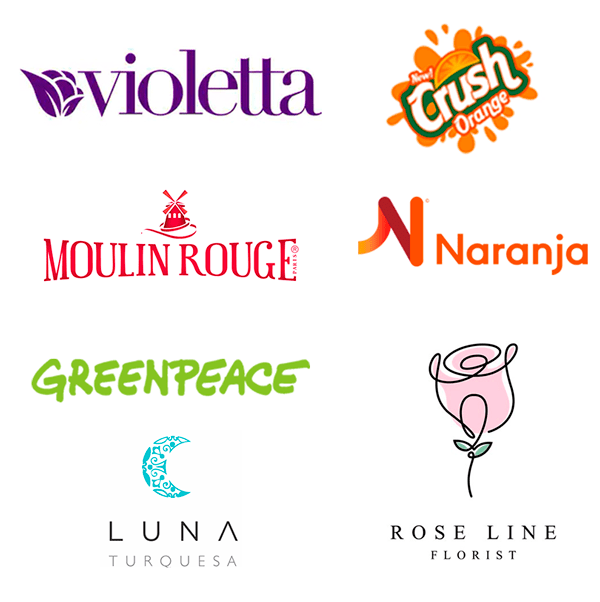
Other times the brand name does not contain a color but refers to elements that lead to mental images of those tones.
Such is the case of Acqua System, which refers to the "water" that we culturally represent in blue and the ecological green that guarantees purity and safety.

Some, however, refer to objects that have a certain color.
For example, Lacoste represents a green crocodile, Camel a golden-brown camel and the desert, Flamingo refers to a flamingo, and these are always pink; and Sunrise Medical evokes the sun and its orange tones of dawn.


There are also brands that contain countries or references to them in their names, and take the colors of their flags or national shields, such as Iberia and Air Canada, both flag carrier companies that need to identify their nation of origin.

The "Stroop Effect": Saying the color
We have already seen how colors act on our psychology and can interfere with our decision-making, moods, and how they create images and concepts in our minds.
I propose a challenge through a game that will surely exercise your brain and your sense of color perception: Let's play "Saying the color"
“Saying the color” is a type of exercise that aims to work on attentional and inhibitory capacity, as well as processing speed.
It is based on the well-known Stroop effect, which in psychology is a demonstration of interference in the reaction time of a task.
The Stroop effect is a psychological phenomenon that occurs when the automatic reading of a word interferes with the task of identifying the color of the ink in which it is written.
For example, it is slower to say the ink color of the word "blue" written in red than to name the ink color of a red circle, due to interference between reading the word and naming the ink color.
This delay in response is a measure of attention, cognitive control, and the ability to inhibit irrelevant information.
Main features
- The challenge: The task consists of naming the ink color of a word, ignoring the meaning of the word itself.
- Interference: When the color of the ink does not match the meaning of the word (for example, the word "GREEN" written in blue ink), a conflict occurs that delays the response.
- Automatic vs. Controlled Processes: The Stroop effect illustrates the interference between an automatic process (reading the word) and a controlled process (naming the ink color). Reading is a more automatic and faster process, so it interferes with the slower process of identifying the color.
Applications
It is used in neuroscience and psychology to assess attention, cognitive flexibility, and executive function.
It is also used in clinical assessments to help diagnose conditions such as ADHD, dyslexia, and brain injuries.
Shall we play?
I propose the challenge of playing "Say the Color"
We will have to say out loud, as quickly as possible, the color of each word, and not the written word.
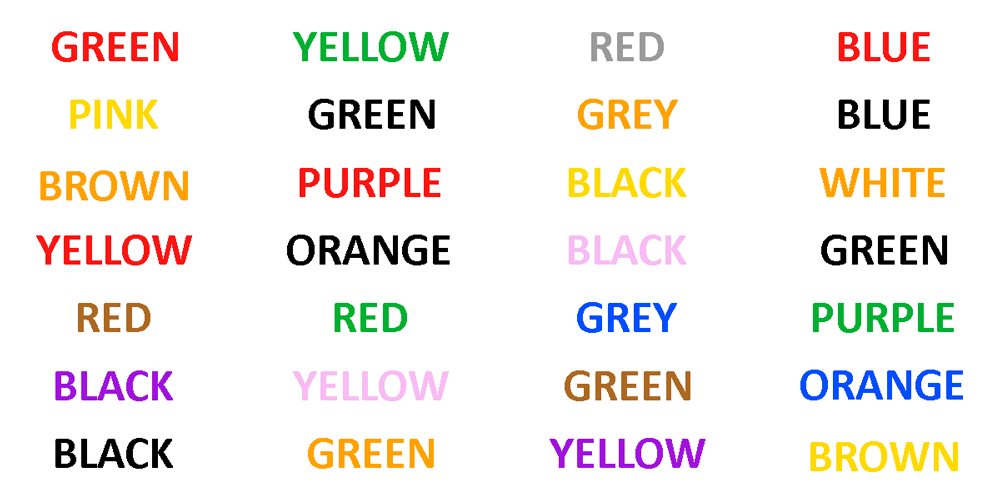
I see, I see…
In other cases, the color in question is not present in the name of the brand itself, but the product it represents makes direct reference to certain colors.
For example, an olive oil brand is very likely to mentally remind us of the green color of olives (precisely calling it olive green) and it would be appropriate to use that tone for its design.
This can be reflected not only in the color of the logo but also in the color of its packaging, which represents the color of the product it contains, helping it to be located and stand out in supermarkets and other stores where it competes with other similar brands.
This is the case of polenta that contain corn flour and we all know them for their characteristic yellow color.
In the examples below, the logos are quite different in color, but the packaging maintains the same tone because, in marketing terms, the concept of product identification prevails over the brand.
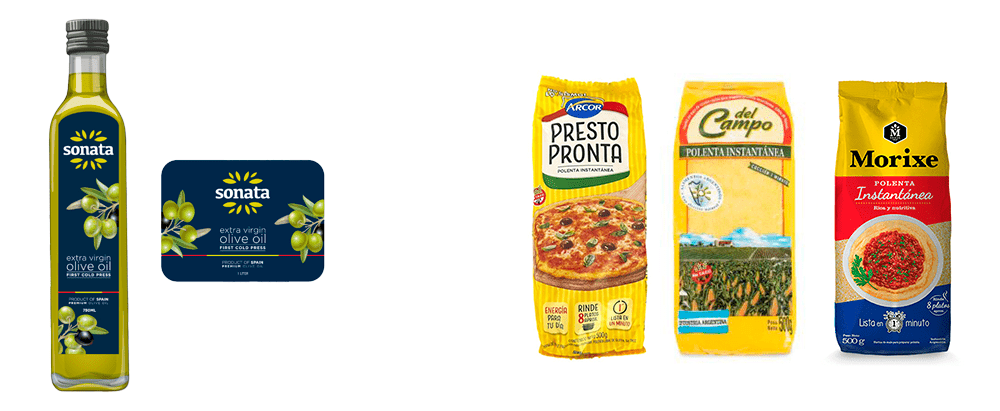
Color as an emotional language
Did you know that colors speak without using words?
Colors go straight to your emotions and make you feel in very specific ways.
As psychologist Angela Wright, who created the Colour Affects system, says, “Colour has the power to change how we act, how we feel and even what we buy.”
When you understand this, you can create a brand that naturally connects with your audience.
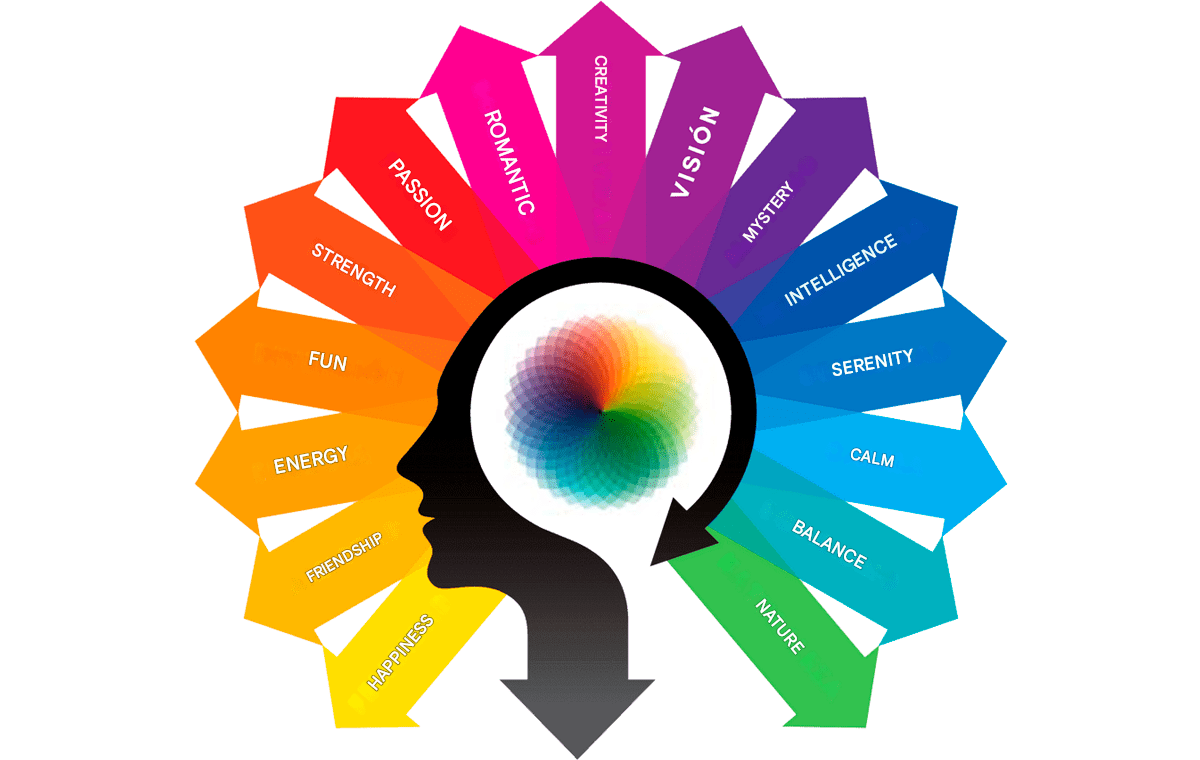

A matter of perception
Colors are present in every aspect of our lives and have a huge impact on our emotions, perceptions, and decisions.
Color psychology plays a fundamental role in the world of branding and marketing, as the right choice of colors can influence the emotional connection a brand creates with its audience.
Color perception is always subjective and can vary across cultures, individual experiences, and context.
We know that while in some cultures white is a symbol of purity and peace, in others it can be associated with death and mourning.
Therefore, when selecting colors for a brand or advertising campaign, it is essential to consider the cultural context and connotations associated with each color in that specific context.
For all that, these associations are merely guidelines, not rules written in stone, but they will help you build a brand that aligns with the branding concept you want to give it.

Colors "speak"
What is the meaning of colors in psychology and branding?
Each color has a meaning, and that's why we must know how to apply color psychology to decipher what our target audience might feel about the visual image of our project.
Below, we'll analyze each color individually and list its distinguishing characteristics, the sensations it evokes, how it's applied in logo design, what types of brands choose it for their branding efforts, and we'll showcase some famous brands that represent each color.
Click on the colors to see details.
BLUE
RED
YELLOW
PURPLE
ORANGE
GREEN
PINK
BROWN
BURGUNDY
TURQUOISE
OCHRE
BLACK
WHITE
GRAY
GOLD
SILVER
Warning
It is worth clarifying that when we talk in the next statements about “Meanings and associated emotions” with each color and we differentiate them between Positive and Negative.
This doesn't mean they are pros or cons, but rather they are feelings that designers use when developing a brand concept.
For example, if we find “melancholy” as a negative value for the color blue, we probably wouldn’t use it for an energy drink brand, but it would be very effective for a streaming channel that broadcasts dramatic films.
BLUE
Blue surrounds us daily as it is the most abundant in nature.
You only have to raise your gaze to the infinite sky to contemplate all its shades or lose your gaze in the horizon of the sea.
According to statistics, 57% of men and 35% of women choose it as their favorite color, as it is pleasing to the eyes and creates a calming and relaxing effect.
Blue conveys a sense of reliability, honesty, and stability, as it brings feelings of security, strength, wisdom, confidence, mental clarity, logic, and problem-solving ability.
Marketers and brand designers leverage the psychology of the color blue to make a positive impression and attract new customers.
On the other hand, it can have some negative connotations, for example, there are very few blue foods in nature, so the color reduces the feeling of appetite.
Furthermore, since it is a cold color, it can convey feelings of melancholy, loneliness, and hostility.
Meanings and emotions associated with the color blue
Positive
Security
Trust
Credibility
Intelligence
Efficiency
Serenity
Professionalism
Relaxation
Authority
Commitment
Negative
Coldness
Distance
Loneliness
Inaccessibility
Hostility
Lack of appetite
Antipathy
Despondency
Sadness
Melancholy

Use of blue in brand design
Blue is undoubtedly the favorite color of major brands due to its consistency and versatility.
Brands that use blue in their corporate images typically belong to the banking, financial, insurance, institutional, training, or healthcare sectors, as well as technology, innovation, professional services, and security.
It is widely used by companies that want to be perceived as safe and reliable and convey an image of professionalism and peace of mind.
Social media companies such as Facebook and LinkedIn, as well as many passenger transportation companies and airlines, frequently choose blue to boast about their efficiency and reliability.
This is a crucial trait for companies that store tons of user data or hold the security of their customers' lives in their hands, as blue is also associated with peace and tranquility, which can help reduce stress and anxiety.

Some brands that choose blue as their corporate identity color
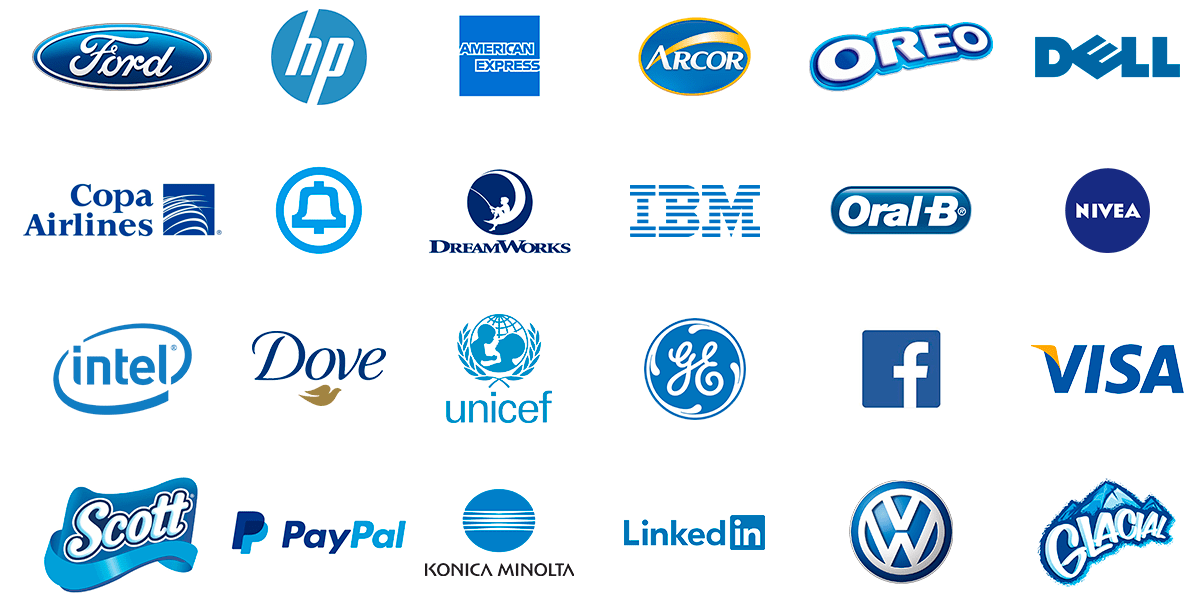
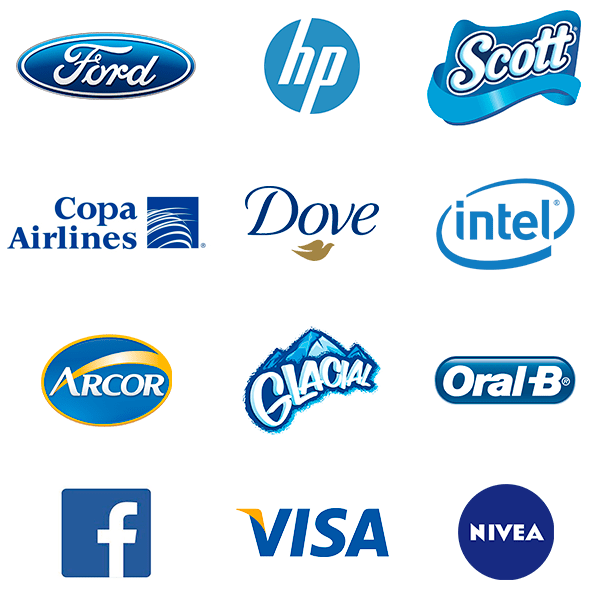
RED
Red evokes a wide variety of emotions and associations, both positive and negative.
It is a color that attracts a lot of attention, and its interpretation can vary depending on the cultural context and the intensity of the tone.
It exalts action, energy, bravery, courage, vitality, dynamism, excitement and enthusiasm, as well as danger, prohibition and urgency.
It is also associated with strength, power and leadership, as it denotes authority and self-confidence.
In some contexts, red can symbolize warmth, joy, happiness, luck, and prosperity—all very powerful emotions that influence consumers' psychological behavior.
It represents passion, romantic love, sexual attraction, adventure, adrenaline, and boiling blood, and that's why we associate it with feelings of vitality, movement, excitement, and aggression.
Simply wearing the color red could lead us to behave in a more extroverted way than we are used to.
Red screams, "Here I am! Look at me!" and we can assure you it will never go unnoticed.
It is undoubtedly the most effective color to highlight what is prohibited, risk, danger, attention, emergency, and anything that generates consequences that can be avoided with attention and prudence.
No one remains indifferent to the presence of the color red.
Meanings and emotions associated with the color red
Positive
Power
Passion
Sexuality
Energy
Fearlessness
Emotion
Youth
Strength
Adrenaline
Action
Negative
Anger
Danger
Warning
Challenge
Pain
Urgency
Alert
Prohibition
Inconvenience
Risk
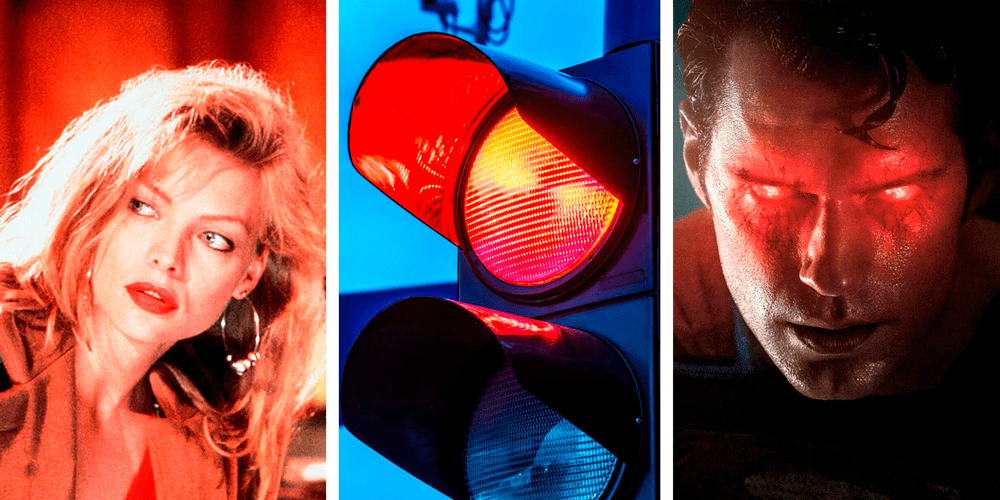
Use of red in brand design
Red is very effective in call-to-action or warning buttons on websites, creating dynamic situations that require user participation and motivate them to click, such as making a purchase, sending a message, or canceling an action.
It is associated with a feeling of desire and can increase blood pressure and stimulate appetite, motivating consumption, which is why many restaurants feature the color red on their tablecloths, napkins, and menus.
Many food brands choose it to design their product packaging, seeking to create an impact on their consumers and draw their attention to promotions, offers, and impulse purchases.
It's ideal for dynamic, bold brands that want to stand out by creating a powerful, emotional impression on their customers.
This makes it suitable for automotive products, energy drinks, food, or video games.

Some brands that choose red as their corporate identity color
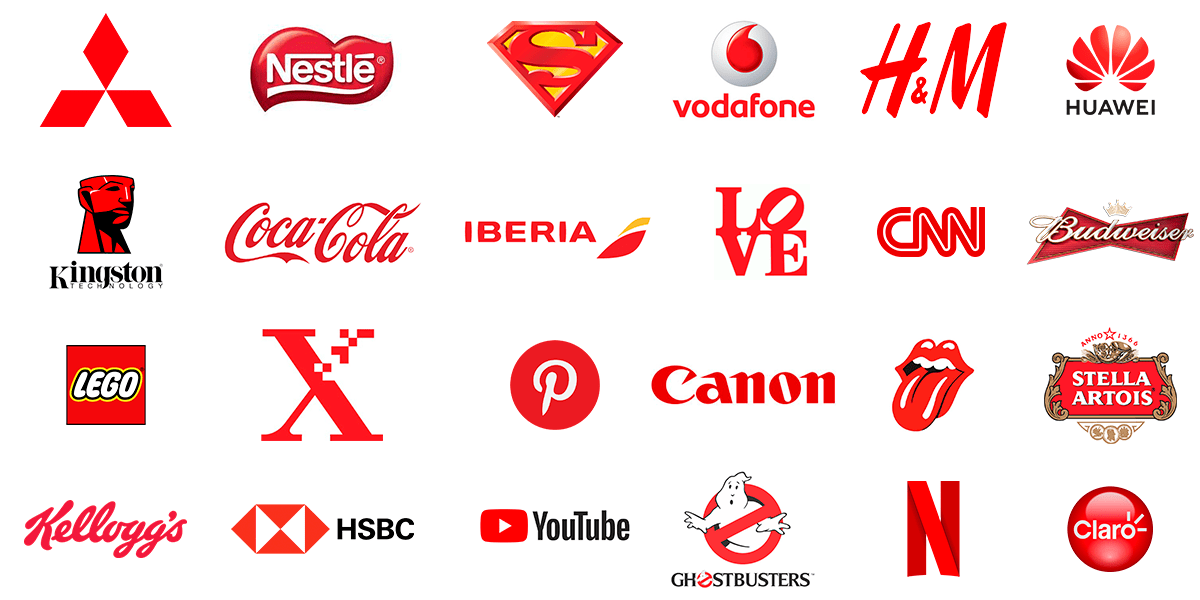
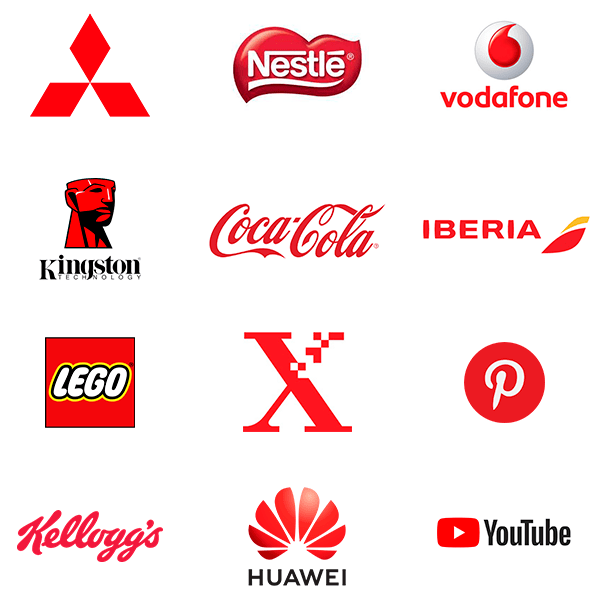
YELLOW
Yellow is a light and energetic color capable of stimulating the mind and generating feelings of warmth and joy.
It represents youth, optimism, and happiness, which is why it is the color of smiley faces, sunflowers, and rubber duckies.
In Eastern cultures, yellow is considered a sacred color and represents gold as a symbol of wealth, fertility, eternity, and wisdom, and also evokes the infinite energy of sunlight.
It is a cheerful and optimistic color that stands out and quickly draws attention, being warm and vibrant, but without the intensity of red.
Some studies show that due to its toning effect on the brain, this color helps mental stimulation, clears the mind, and increases muscle energy.
It also activates memory, promotes communication, improves vision, builds confidence, and stimulates the central nervous system.
On the other hand, yellow is one of the most ambiguous colors, as it can also represent envy, anger, bad luck, or betrayal.
Its improper use can be irritating or tiring, and can evoke negative connotations such as anxiety or irrationality.
Meanings and emotions associated with the color yellow
Positive
Optimism
Clarity
Creativity
Energy
Happiness
Extroversion
Youth
Recreation
Joy
Friendship
Negative
Irrationality
Caution
Anxiety
Frustration
Cowardice
Waiting
Lying
Arrogance
Envy
Insecurity

Use of yellow in brand design
Yellow evokes positive emotions, feelings of happiness, youth, vitality, motivation, creativity, friendship, energy, wealth, power, abundance, strength, action, and risk.
It can add a fresh and fun touch to the decor of offices, classrooms, hotels, and cafes.
This color is valued by marketing specialists because it helps people make quick purchasing decisions and relieves consumer stress.
In combination with black, it highlights an object and arouses the customer's interest.
It is very well applied in the design of educational products and those related to entertainment, fun, leisure, and sports.
It also frequently appears in advertisements for children's activities, educational or learning products, promotional materials, and sales announcements aimed at young audiences.
Brands that want to be perceived as friendly and approachable often use yellow in their visual identity, such as fast food, beverage, and youth advertising.
It is widely used to create expectation, capture attention, and could foster feelings of alertness, caution, fear, irrationality, and anxiety.
Due to its vibrant tone, it is very effective in elements related to traffic and road signs.
The yellow light on a traffic light indicates an alert, marking a wait, a transition between what is permitted (green) and what is prohibited (red).
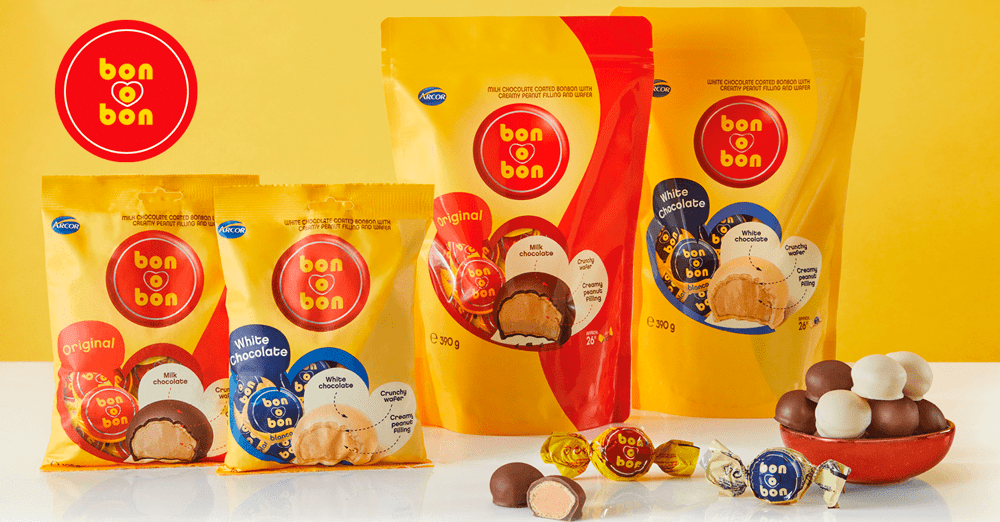
Some brands that choose yellow as their corporate identity color
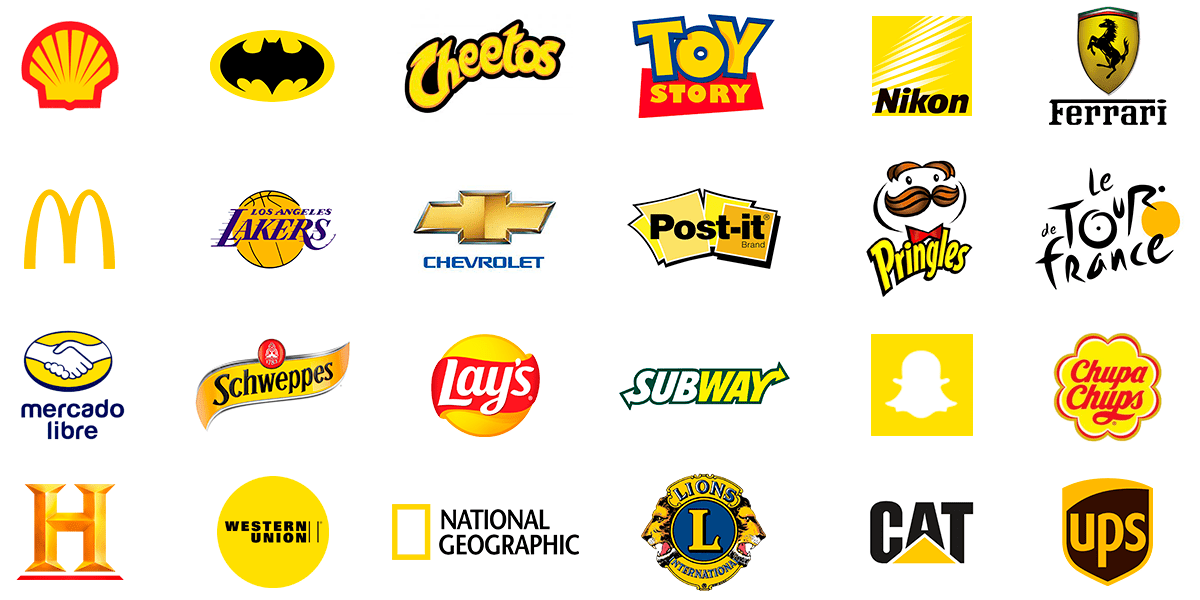
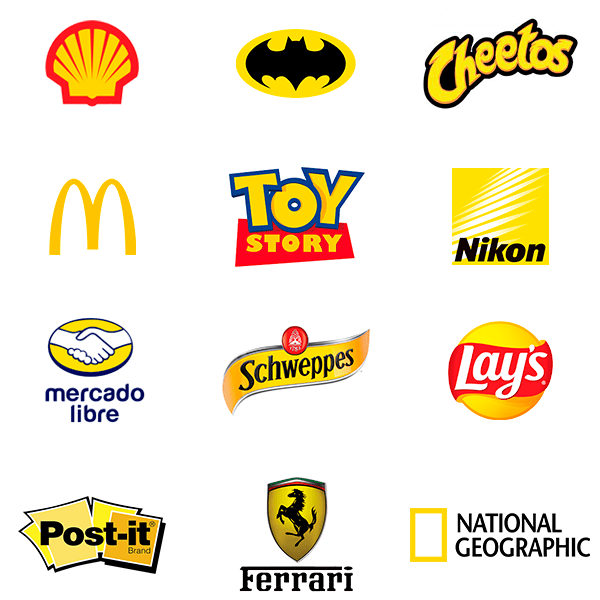
PURPLE
The color purple, also called violet or purple, in psychology is associated with royalty, superiority and creativity.
It is also associated with mystery, magic, spirituality, and connection with the divine, conveying an image of opulence and distinction.
It is considered a color that inspires introspection and contemplation, evoking sensations of peace, tranquility, and calm, and is therefore the color of transmutation par excellence, representing the spiritual transformation of people.
The meaning of the color purple can vary depending on its shade; darker shades tend to be more sophisticated and mysterious, while lighter shades can convey tranquility and delicacy.
In the Roman Empire, high-ranking officials wore Tyrian purple, which at the time cost more than gold.
Queen Elizabeth I even banned anyone outside the royal family from wearing purple.
Because of these ancient associations, purple generates a wise, rich, and sophisticated aura, however, some may associate this color with negative connotations, such as sadness or introversion.
Meanings and emotions associated with the color purple
Positive
Wisdom
Transmutation
Wealth
Spirituality
Mysticism
Imagination
Sophistication
Royalty
Elegance
Experience
Negative
Reflection
Decadence
Excess
Bad mood
Envy
Jealousy
Greed
Anguish
Fear
Uncertainty
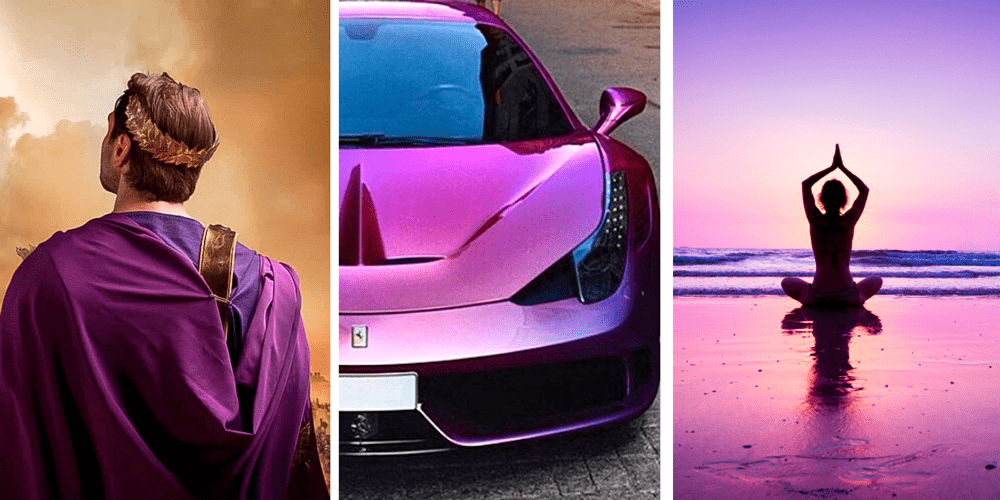
Using purple in brand design
This color has a calming effect on people and is used by brands that want to convey a sophisticated and mysterious image.
It is often used in artistic settings to encourage creative expression, and in advertising campaigns related to spiritual, personal well-being, and creativity products and services.
It is associated with luxury, delicacy, softness and sweetness and is used for beauty cosmetics and also children's products.
Purple is a perfect color for brands looking to convey exclusivity, originality, or superior experience.
In artistic settings, it is used to foster creativity and expression, and in mental health, it is used to help relieve anxiety and promote calm.
In marketing, it is used to convey sophistication and exclusivity, and in some cases, it can be associated with beauty or anti-aging products aimed at women.
It can also stimulate creativity and imagination, making it a good option for brands looking to stand out for their originality or innovation.
Violet hues can evoke feelings of peace, introspection, and spiritual connection, making them suitable for products or services related to meditation, well-being, and self-improvement.
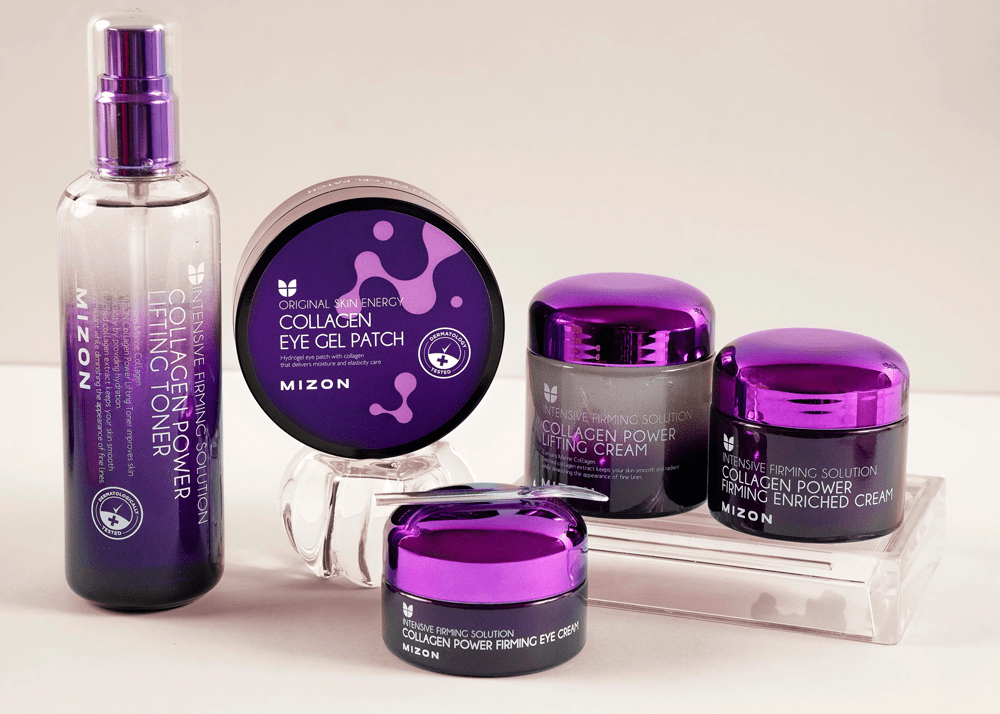
Some brands that choose purple as their corporate identity color
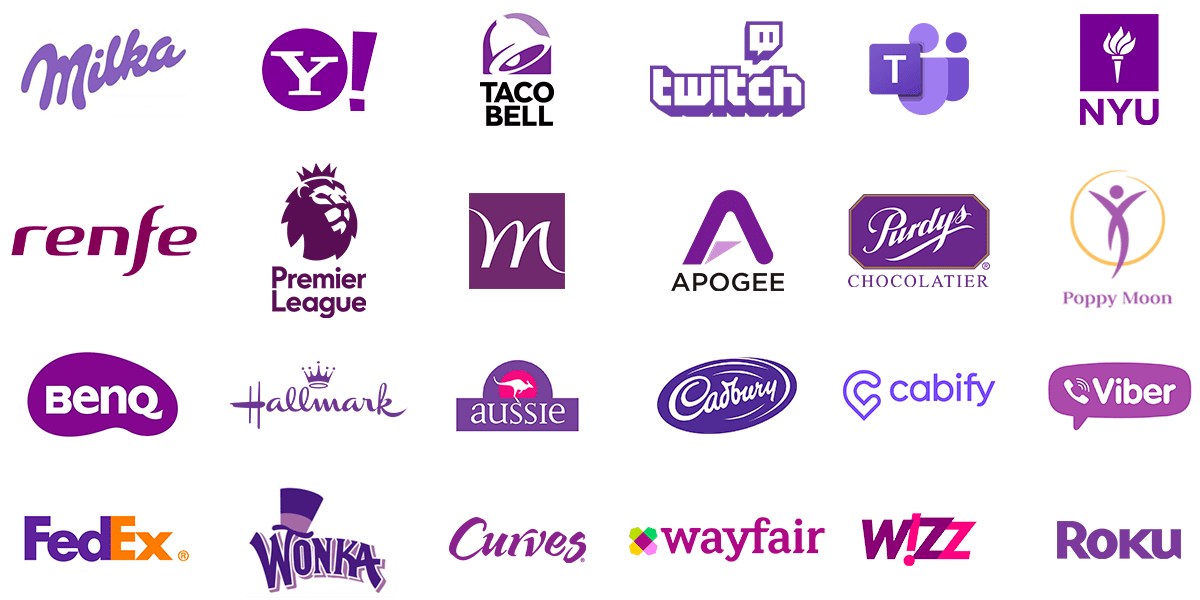
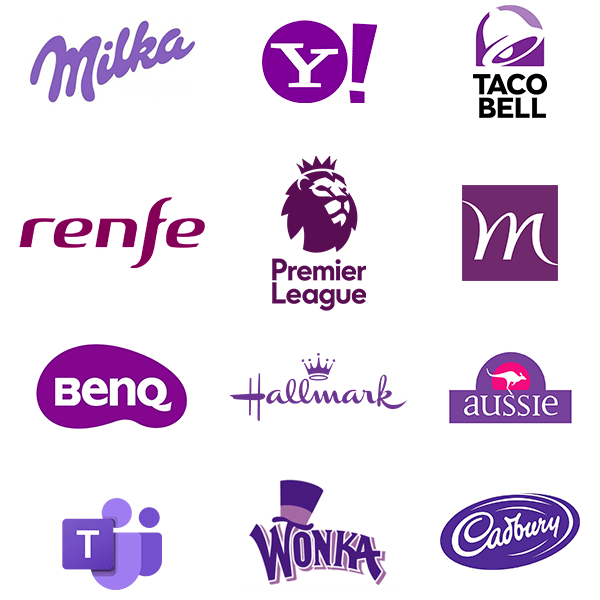
ORANGE
Orange is a cheerful, enthusiastic, outgoing, and vibrant color that produces a comfortable and warm feeling, as it is associated with nature and the sun at sunrise and sunset.
It has an intense and striking character, but not as aggressive as red, being a striking and discreet color, chosen by friendly, active, daring, rebellious, and original people.
It is a color for communicating with young people as it produces a stimulating effect and evokes confidence, success, and generosity, transmitting vitality, enthusiasm, warmth, optimism, adventure, and sociability.
Orange brings a spirit of independence and self-confidence, being the color of constructive energy and creativity.
It gives security and strength and stimulates desire, appetite and is often associated with sweet taste.
Meanings and emotions associated with the color orange
Positive
Value
Joy
Honesty
Trust
Accessibility
Warmth
Creativity
Kindness
Enthusiasm
Originality
Negative
Boldness
Instability
Immaturity
Ignorance
Slowness
Deprivation
Frustration
Overwhelm
Confidence
Suffocating

Using orange in brand design
Orange is a versatile color that can be used by a wide variety of companies that want to convey an image of energy, creativity, warmth, or approachability.
It has very high visibility and evokes feelings of joy, fun and optimism.
It can be used to attract attention and promote food products or toys, and is chosen by brands that want to project a dynamic and youthful image.
This vibrant hue possesses meaning and potential that transcends mere aesthetics, influencing brand perception and consumer emotions.
It can make a product feel more accessible by providing a sense of warmth and closeness in designs, making users feel more comfortable and connected to the brand.
It is an optimal color to generate emotion and stimulate interaction with users, especially in creating effective calls to action (CTA).
Orange buttons are eye-catching and can increase click-through rates.
It is widely used in advertising banners and website design to attract user attention and generate an emotional response that translates into potential customer conversions.
Associated with creativity, originality, and innovation, this color encourages action and out-of-the-box thinking, which is why it's used by brands that want to stand out for their creativity and originality.
Honesty and approachability are fundamental qualities of the color orange, which inspires trust and security, which is why it is used by brands that want to convey a transparent and accessible image.
Due to its playful nature, it works well with non-corporate designs, such as personal brands.

Some brands that choose orange as their corporate identity color
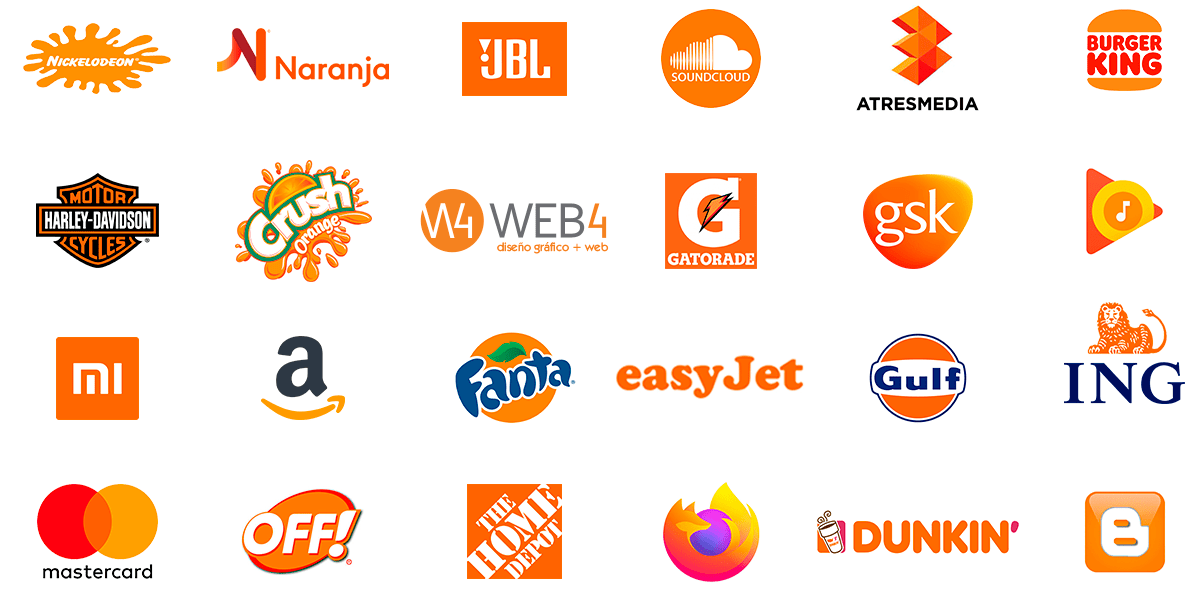
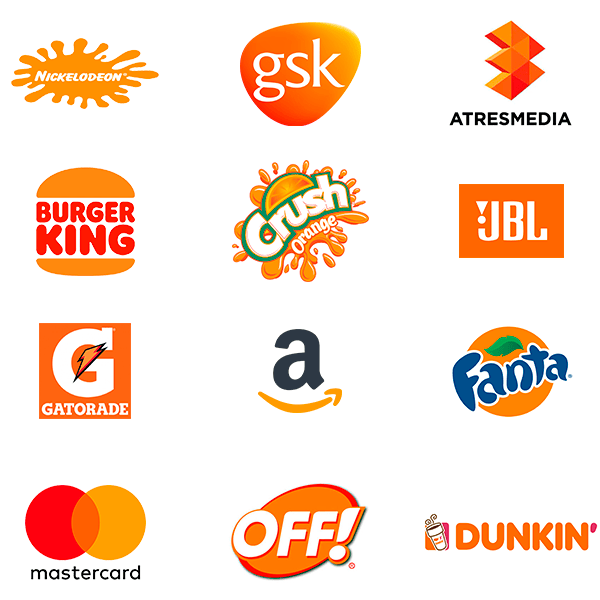
GREEN
Green is considered a calming and relaxing color, and its presence can impact people's emotions and perceptions.
This color represents harmony and growth and, according to psychology, is the point of balance between the heart, emotions, and mind.
Green is commonly associated with nature and the life that surrounds us, as it is the predominant color of the plant kingdom and is related to spring, ecology, tranquility, the environment, and sustainability.
It is also a refreshing color linked to fertility, hope, optimism, security, renewal, and emotional balance.
This color transmits energy and enthusiasm and has a revitalizing effect, stimulating people's spirits.
Green represents everything positive, what is good, acceptance, tolerance, agreement or consensus, the beginning, permission to move forward, success, freedom and fulfillment, life itself.
Meanings and emotions associated with the color green
Positive
Hope
Freshness
Nature
Growth
Sustainability
Healing
Camouflage
Healthy Living
Approval
Balance
Negative
Boredom
Stagnation
Envy
Weakening
Disgust
War
Immaturity
Illness
Bitterness
Toxicity

Using green in brand design
Green is also associated with health and healing, which is reflected in the use of this color in the brands of numerous healthcare organizations.
It is generally used in the design and decoration of relaxation environments: waiting rooms, spas, and therapy salons.
It has a financial meaning as it is used to represent the dollar currency.
It is therefore the color of wealth and finances and conveys a feeling of growth and prosperity.
Shades of dark green can be used to represent abundance and prestige, so it may be attractive to financial or investment companies.
Su conexión con la naturaleza lo hace apropiado para las marcas relacionadas con el medio ambiente, productos orgánicos, la sostenibilidad y la vida al aire libre.
It generates tranquility and calm, which is very convenient for brands that want to convey a sense of security and confidence to their customers, such as hotels, tourism and recreation agencies.
Green is also perceived as non-human, as no aspect of the human body is that color, and that is why it is assigned characters and caricatures of reptiles, dragons, demons, aliens, and ogres, among others.
Some brands that choose green as their corporate identity color
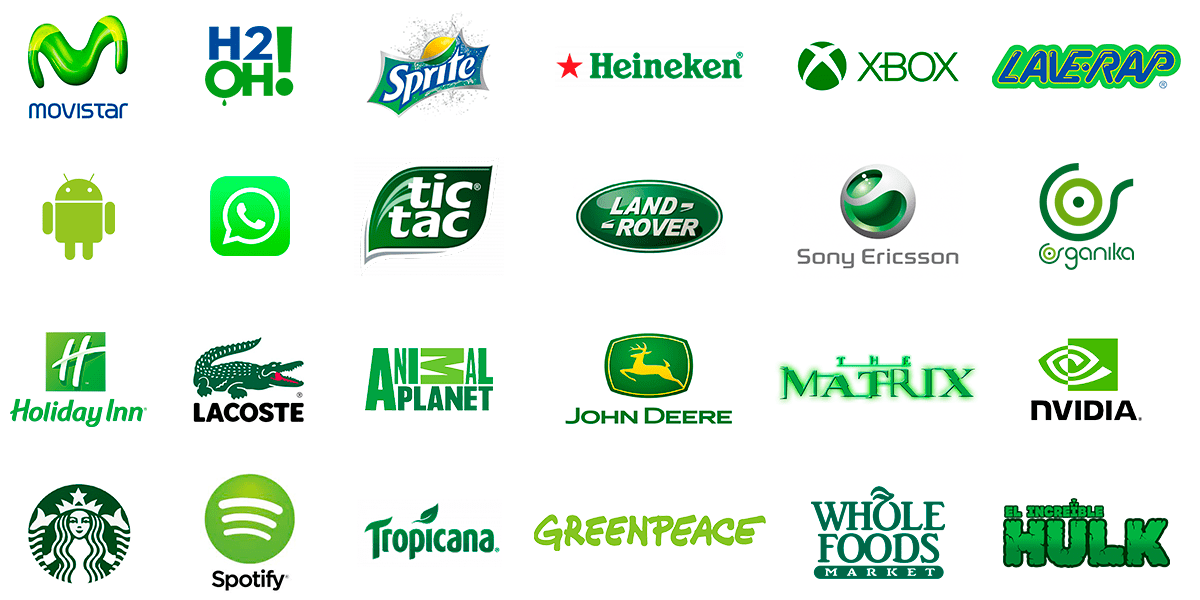

PINK
Pink is a soft, sweet shade associated with tenderness, love, affection, courtesy, sensitivity, romance, and compassion, while also conveying feelings of warmth and approachability.
This color can have an energizing effect on people, which is often attributed to its similarity to red, but in a softer, less aggressive version.
It encourages communication and a receptive attitude toward others, making it a perfect shade for those seeking to create a welcoming and harmonious atmosphere, with nuances of kindness, innocence, and sensuality.
It is perceived as a cheerful and optimistic color, associated with the idea of "seeing life through rose-colored glasses," but it can also be associated with passivity and a lack of willingness to take things seriously.
Pink is often seen as a teenage color, linked to inexperience, weakness, inhibitions, shyness, and a tendency to be overly emotional.
Meanings and emotions associated with the color pink
Positive
Imagination
Passion
Curiosity
Creativity
Innovation
Kindness
Innocence
Youth
Femininity
Romanticism
Negative
Reflection
Decadence
Passivity
Delicacy
Inexperience
Lack of motivation
Childhood
Candidity
Immaturity
Rebellion
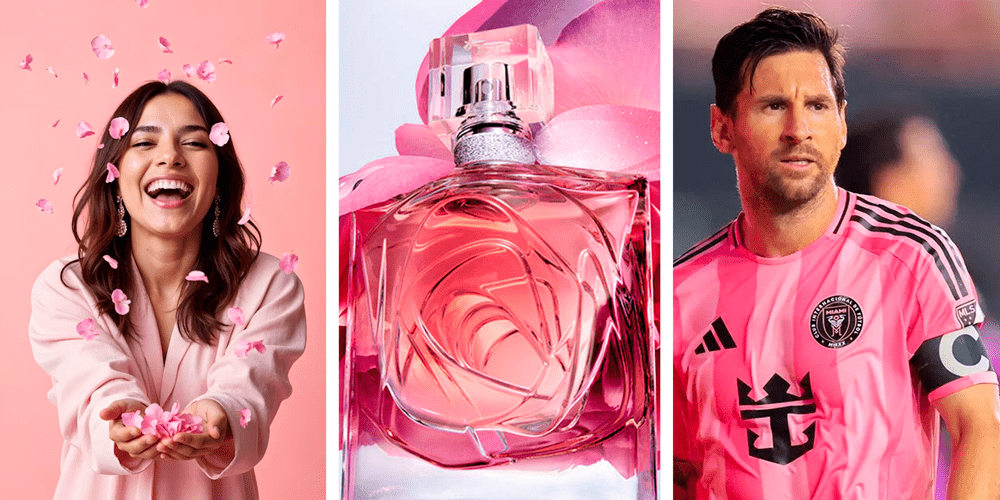
Using pink in brand design
Pink is associated with compassion and self-care, positively influencing mood and promoting feelings of warmth and comfort.
It is used in advertising to attract specific audiences and convey specific messages, such as tenderness, femininity, romanticism, sensitivity, and empathy toward others.
Pink has traditionally been associated with femininity and is often used in products and environments aimed at women and girls, children's products, toys, candy, and sweets.
But beyond its connection to femininity, pink has been rediscovered as a symbol of empowerment and acceptance, and for example, it is the color chosen for the identity of breast cancer prevention campaigns.
Using the color pink in brand design can help you stand out from your competitors, especially if most of them use more conventional shades like blue or green.
Brands looking to break stereotypes or stand out in a competitive market are embracing pink to communicate modernity, boldness, and originality.
This color is being used in unexpected sectors like technology and automotive, redefining what it means to be bold.
Its use in corporate design can reinforce gender stereotypes, limiting a product's appeal to customers of both genders, especially if it doesn't aim to focus exclusively on a female audience.
Pink can also denote a lack of seriousness, and while it evokes friendly and warm feelings, it might not be the ideal choice for companies looking to convey a more formal or professional tone.
Combining pink with other colors that complement and balance its effect can yield excellent results when designing a brand.
It interacts very well with grays, whites, or blacks for a more sophisticated and elegant design, or with blues or greens to convey greater inclusivity and diversity.
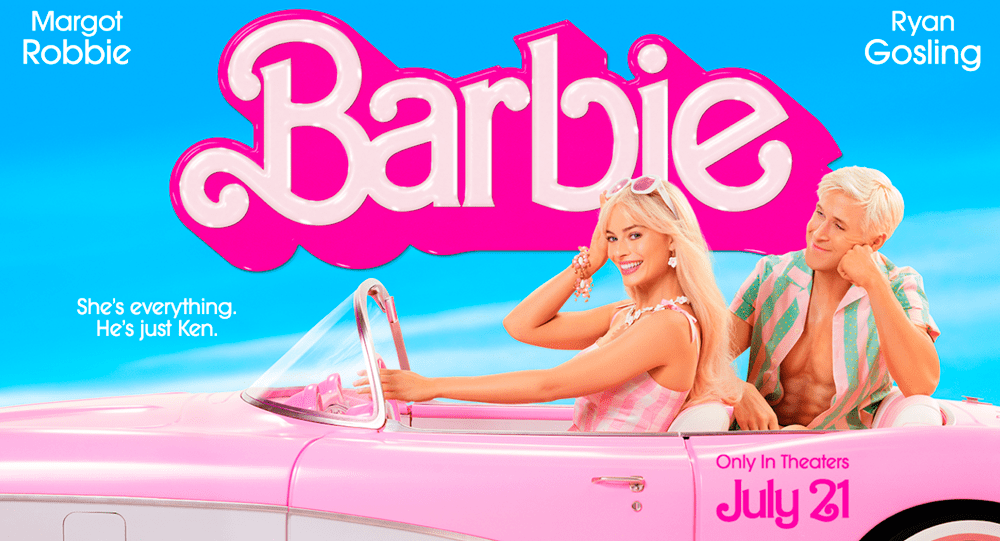
Some brands that choose pink as their corporate identity color
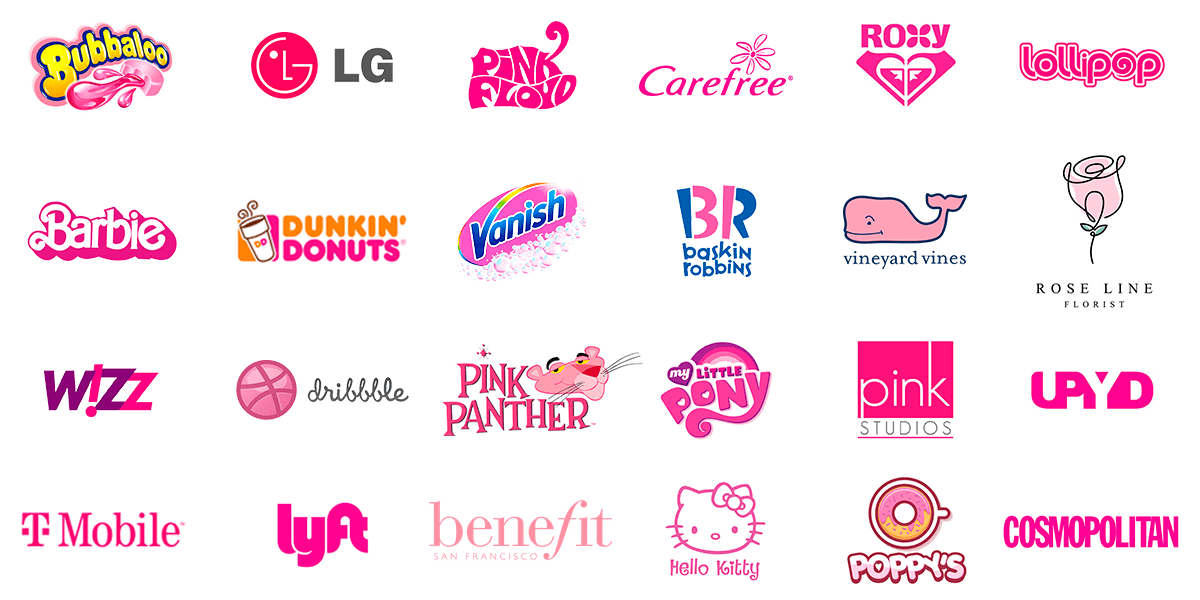
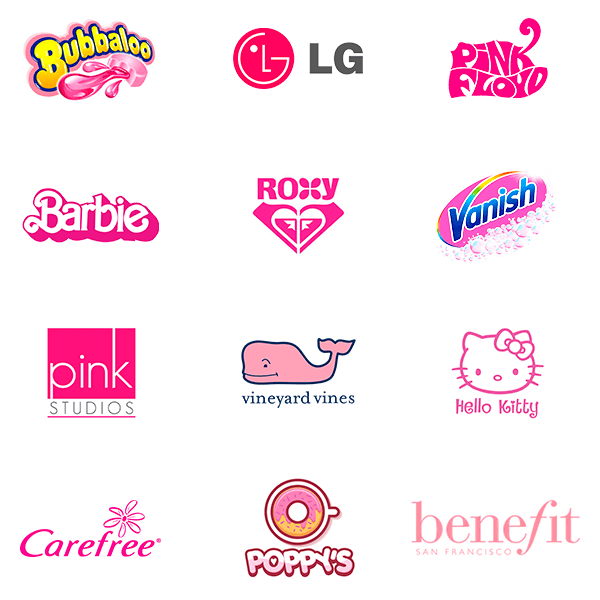
BROWN
Brown is an earthy color that is associated with nature and the environment.
Known as the color of natural elements, we see it all around us in the earth, wood, sand, and stone, as well as in the hair and skin of animals.
Being such a prevalent color in our environment, it is perceived as neutral, warmer than black, and brings vibrancy to palettes that would otherwise seem too austere.
Psychologically, brown is related to strength and resilience.
Its tone has a direct association with resistance, durability, with feelings of security, stability and comfort, and is perceived as a reliable and honest color, without pretensions.
It is the color of simplicity, of tradition, which gives it an aura of common sense and balance.
As for trends, brown has historically been associated with feelings of loneliness, sadness, boredom, and poverty, largely due to its association with rural life and hard work.
However, in recent years, its use has become more frequent, as rural lifestyles have been romanticized in contrast to the urban vertigo of large cities.
For some people it may be perceived as monotonous or boring, evoking feelings of rigidity or a lack of creativity, as it is associated more with the traditional than with the innovative.
Despite these ambiguous associations, brown remains a versatile color, which can vary depending on its hue.
Lighter shades, such as beige, ochre, or caramel, are perceived as soft and comforting, while darker shades, such as mahogany or chocolate, provide sophistication and elegance.
Meanings and emotions associated with the color brown
Positive
Stability
Security
Robustness
Work
Tradition
Ecology
Resistance
Friendship
Family
Reunion
Negative
Boredom
Loneliness
Rusticity
Aridity
Antiquity
Poverty
Rurality
Repugnance
Despondency

Using brown in brand design
Although brown is a versatile color, it's important to balance it with other colors to prevent the design from looking dull or too earthy.
It can be combined with warmer earth tones such as beige, ochre, orange, and also with neutral colors such as white, black and gray.
Associated with nature, it is commonly seen in advertising for products that come from the earth, such as coffee or chocolate, as well as in farm products, wines, natural foods, meats, honey, sweets, and educational and recreational activities.
Along with green, brown is associated with ecological awareness and environmental preservation, and is used by brands that promote sustainability, biodiversity, adventure tourism, outdoor activities, and agriculture.
In marketing, brown is associated with reliability, seriousness, and protection, as it conveys a sense of stability, solidity, and security, making it ideal for brands seeking to project trust, tradition, durability, and responsibility.
This is the case for legal professionals, schools, universities, museums, and libraries, as well as traditional and regional indigenous products, crafts, textiles, pottery, leather goods, and folk artists and musicians.
The color brown plays a fundamental role in sustainable branding and has become key for brands committed to ecology and recycling.
Companies that want to reflect a connection with nature or organic products often use this tone, designing packaging with recycled kraft paper bags and eco-friendly labels.
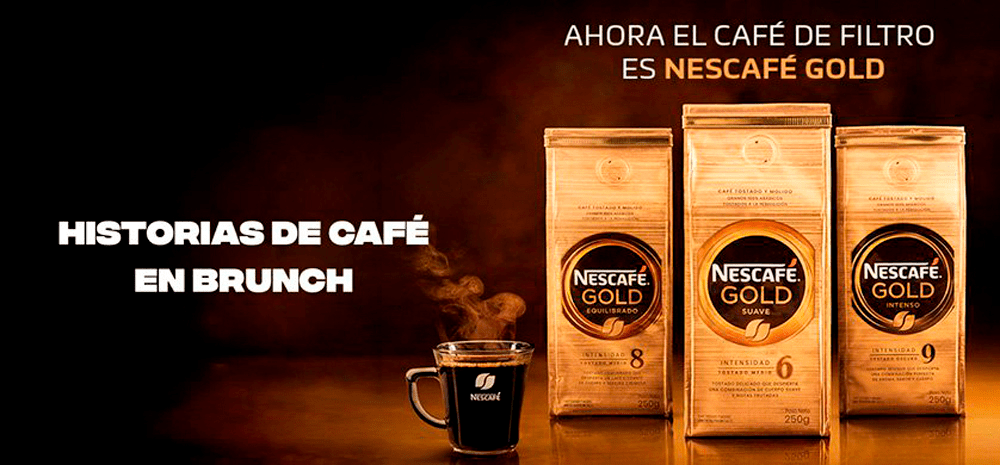
Some brands that choose brown as their corporate identity color


BURGUNDY
The color burgundy (also called burgundy, wine red, or bordeaux) evokes feelings of elegance, sophistication, wealth, and power.
It can also convey authority, respect, solemnity and confidence, and is associated with deep reflection and thought.
It is a color that lies between red and purple within the chromatic spectrum, and depending on its tone, it can resemble the characteristics we mentioned before for each of these colors.
Burgundy is synonymous with strength, ambition, and power, and its warm hues create a cozy and comforting atmosphere, while its dark tones convey respect and seriousness.
Often associated with wealth, luxury, and grandeur, burgundy captures attention while maintaining a sense of subtlety.
In the Catholic religion it often symbolizes the blood of Christ and the communion wine served at mass.
Meanings and emotions associated with the color burgundy
Positive
Wealth
Power
Elegance
Sophistication
Authority
Confidence
Reflection
Depth
Exclusivity
Luxury
Negative
Boredom
Melancholy
Diplomacy
Solemnity
Lack of motivation
Disinterest
Darkness
Silence
Drunkenness
Blood
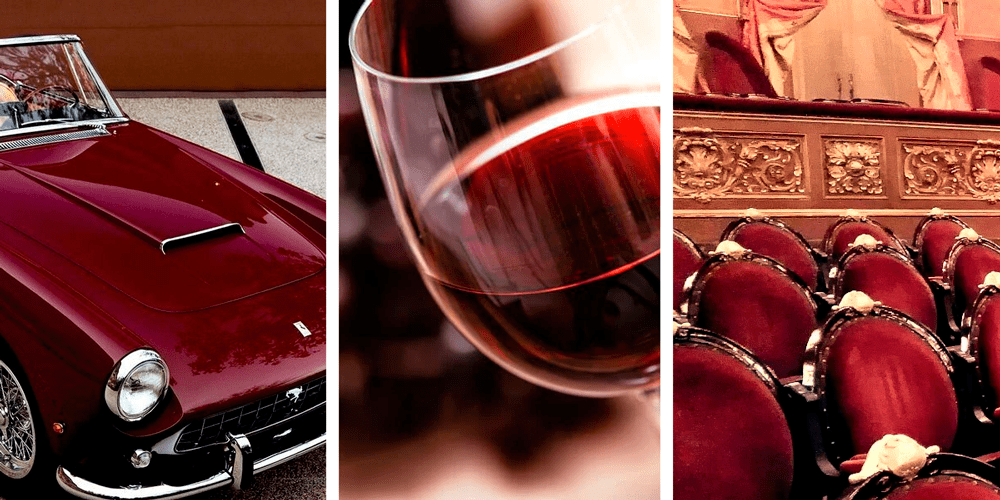
Use of burgundy in brand design
Burgundy is a good choice in design due to its adaptability.
Its versatility allows it to be used for luxury brands, high-end products, or to create a luxurious and elegant environment.
This shade pairs well with more intense colors like blue, orange, or green, and with metallic colors like gold and silver, adding a touch of energy and passion to certain brands.
Burgundy is a symbol of elegance, sophistication, refinement, and good taste—characteristics that some companies seek to convey when making a first impression on customers and defining an image of high quality and exclusivity.
It's associated with luxury and success, making it a great choice for brands that want to convey status and power, and it applies very well to fashion and beauty website design.
It can inspire trust and authority, making it useful for brands that need to demonstrate confidence in their customers, such as law firms and financial institutions.
It's a popular color for brands that offer high-end products or services, such as jewelry, cosmetics, and obviously fine wines, since this is where the color gets its name.
In editorial design, it is used in magazines, books, catalogs, and other printed materials and is often combined with gold or silver inks to create a sense of elegance, luxury, sobriety, and sophistication.
It can stimulate the mind, encouraging reflection and deep thought, and is used in the furnishings of major opera houses and prestigious cultural events, where the red carpet plays a prominent role.
Paradoxically, the carpet is not usually red but a more darker tone, veering towards burgundy.
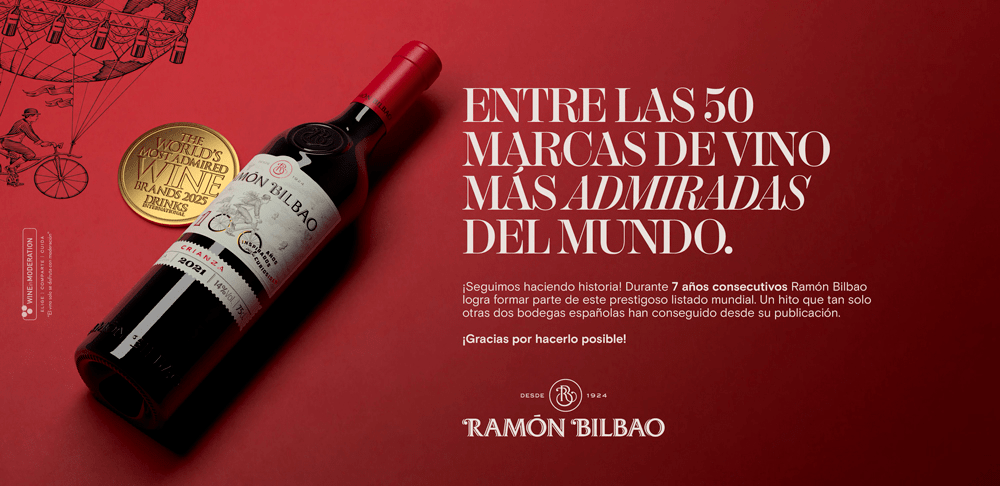
Some brands that choose burgundy as their corporate identity color
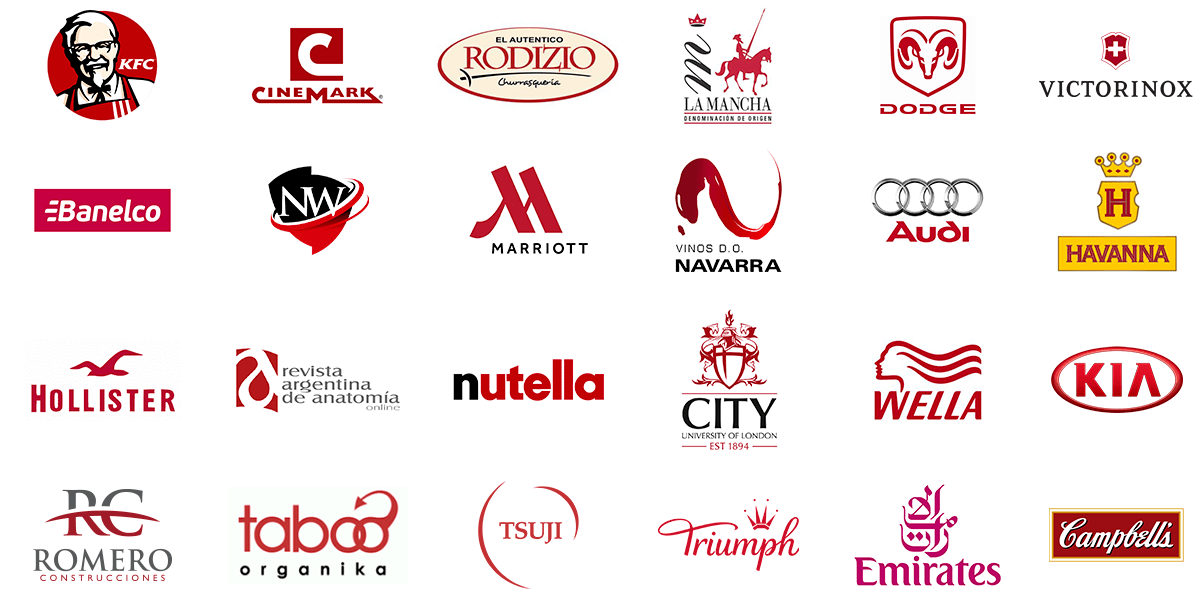
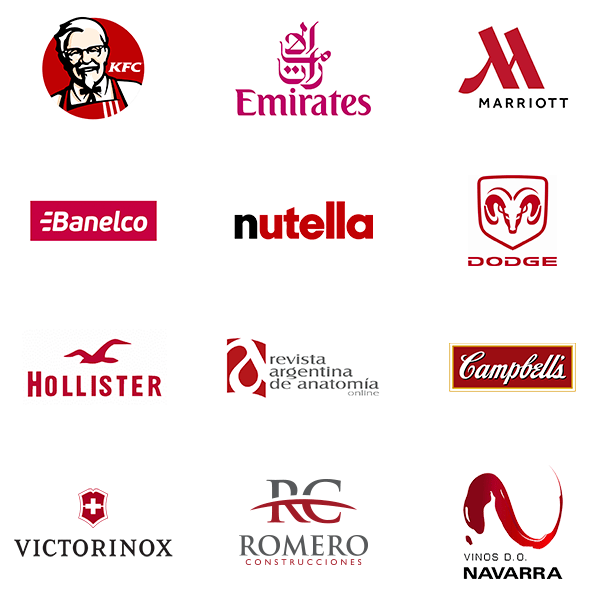
TURQUOISE
Turquoise evokes feelings of tranquility, mental clarity, and creativity, and is also associated with purity, health, and freshness.
This color is located between blue and green within the chromatic spectrum and the combination of both tones creates a natural balance between the intellectual and the emotional.
The blue tint encourages logical thinking, calmness, and discipline, while the green promotes empathy, compassion, and growth.
Turquoise conveys a sense of peace and comfort, similar to that of a natural environment such as the sea or the sky.
In interior design, it can create relaxing and fresh environments, especially in workspaces or break areas where people need to concentrate or relax.
Meanings and emotions associated with the color turquoise
Positive
Calm
Serenity
Mental Clarity
Communication
Creativity
Balance
Revitalization
Energy
Purity
Cleanliness
Leisure
Negative
Coldness
Lack of motivation
Distance
Sobriety
Disinterest
Indecision
Insipidity
Melancholy
Sorrow
Nostalgia

Using turquoise in brand design
The calming nature of turquoise helps reduce stress and anxiety, allowing people to feel more centered and stable.
It is commonly found in brands related to meditation, spas, sports activities, recreation, comfort and recreation
This color can be effective in advertising campaigns for products or services that seek to inspire confidence, balance, clarity, and revitalization.
It's very inspiring in marketing, especially in areas like education, media, and technology.
Turquoise can evoke cleanliness and purity, as in the case of hygiene products or brands of health-related products or services.
In its darker, more muted tones, it's a color that displays very well on screens (much better than some blues), making it suitable for websites or applications related to education, health, or technology, creating accessible, pleasant, and modern environments.
Closely linked to the sea and the sky, it provides a sense of relaxation, healthy living, and leisure, and is widely used in brands related to vacations, tourism, hotels, and leisure.
It combines the reliability of blue with the vibrancy of green, making it a popular choice for tech startups, software companies, and apps that want to convey cutting-edge technology and a commitment to environmental preservation.
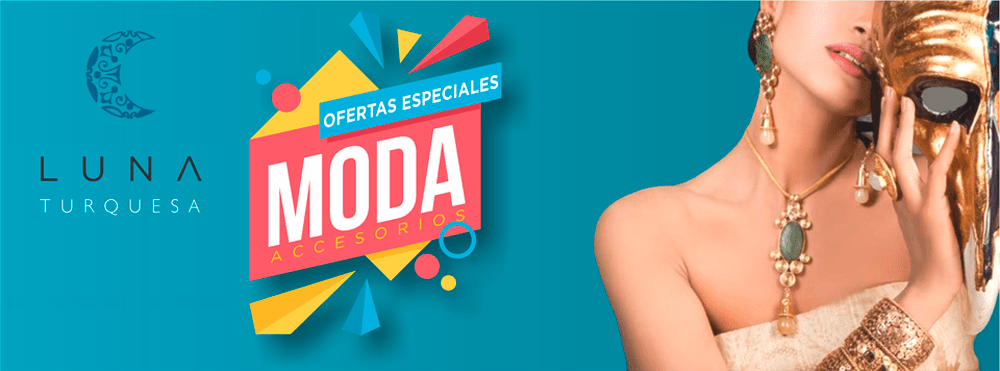
Some brands that choose turquoise as their corporate identity color
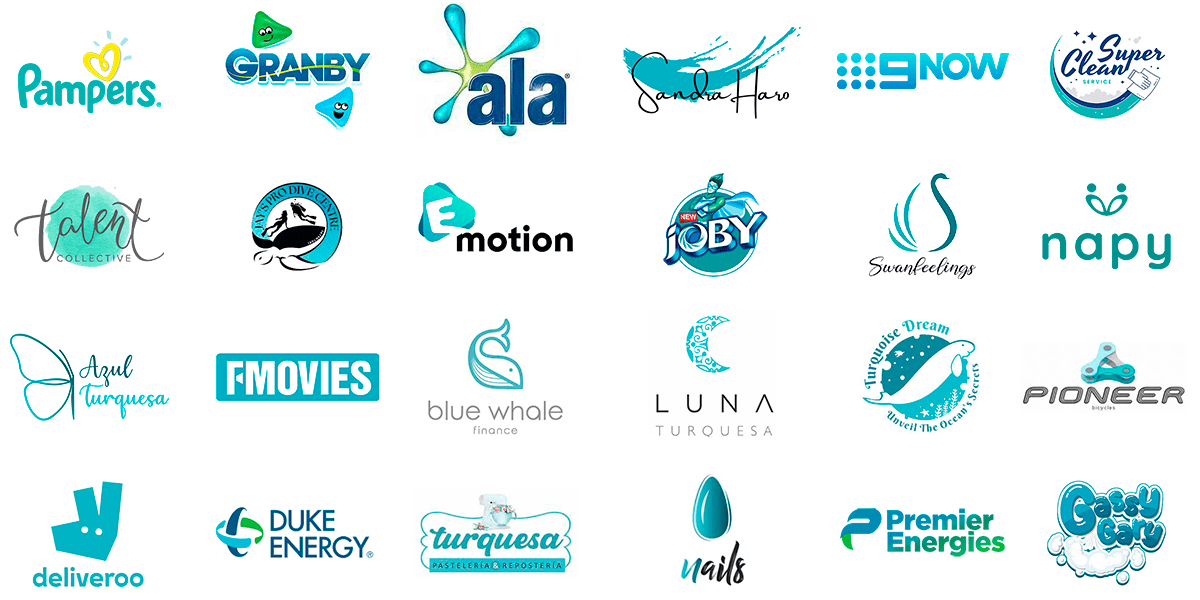
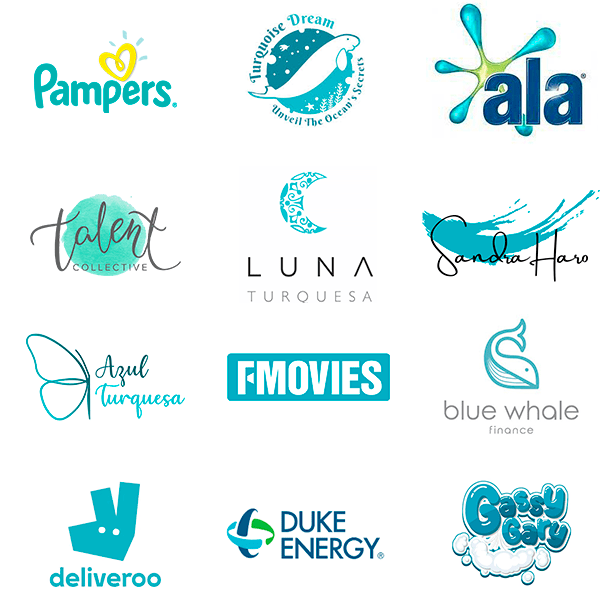
OCHRE
The ochre color is the most elegant representation of yellow.
Its name refers to the golden yellowish earthy minerals produced by oxidation, which are usually orange, brown or reddish, and which when mixed together result in this very particular hue.
Related to the earth and nature, it transmits peace and vitality, evoking warmth, naturalness, stability, elegance and sophistication.
It is a shade derived from natural clay pigments often used to create cozy and comfortable environments that invite relaxation.
This color shares shades with yellow, orange and brown, so it can be used as a more natural alternative to these tones.
Meanings and emotions associated with the color ochre
Positive
Stability
Solidity
Harmony
Persistence
Kindness
Confidence
Vitality
Authenticity
Unity
Prosperity
Negative
Antigüedad
Ruralidad
Carencia
Pobreza
Aburrimiento
Despreocupación
Rusticidad
Desinterés
Disgusto
Melancolía
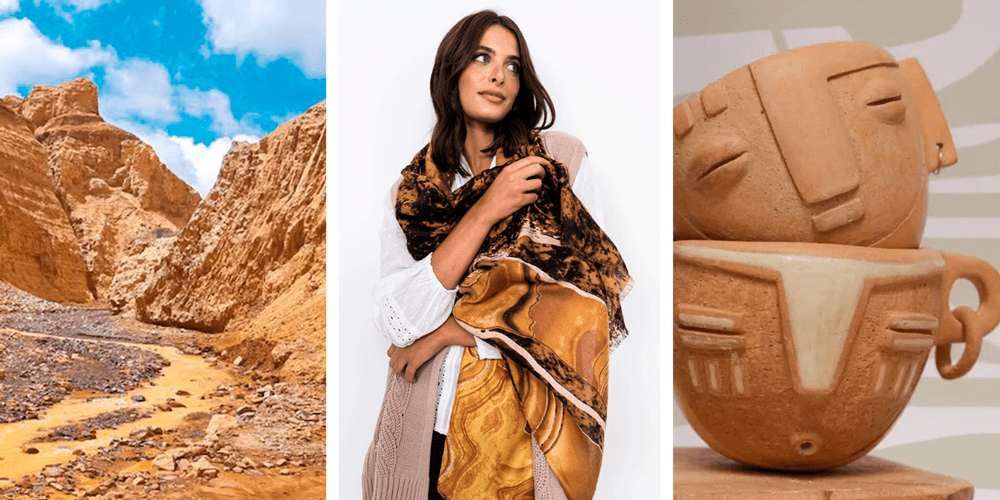
Using ochre in brand design
Ochre can convey a sense of security and well-being, ideal for brands seeking to project a solid and reliable image.
It is a color similar to brown but with the warmth of yellow.
In some contexts, ochre can add a touch of distinction and refinement, especially when combined with other colors such as whites, creams, browns, greens and blues.
It is not a color widely used as a main color for a brand, but rather as a complementary color to highlight details, providing vitality and energy.
It can be used to highlight products or services that seek to convey an image of quality, authenticity, and a connection to nature, health, organic food, the leather industry, textiles, and regional products.
The historical use of ochre in ancient paintings and decorations gives it an air of timelessness and tradition.
It's well-suited for brands seeking to evoke a sense of history and heritage, such as libraries, museums, universities, as well as organic, artisanal, and sustainable products.
Its clay tone evokes the wealth and prosperity obtained from the earth, and in its more yellowish tones it can resemble gold, allowing it to emulate that color or combine with golden inks to apply to luxury packaging.
In web design, ochre can be used to create visually appealing and balanced interfaces, especially where a sense of calm and confidence is required, as it is a warm shade similar to orange but much more relaxing.
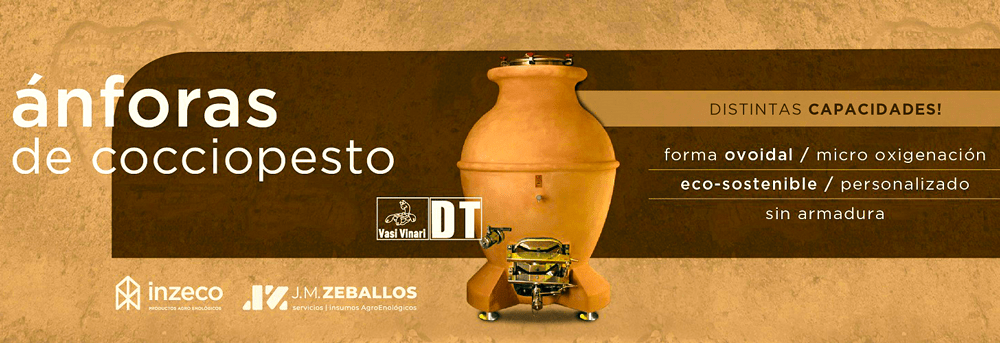
Some brands that choose ochre as their corporate identity color

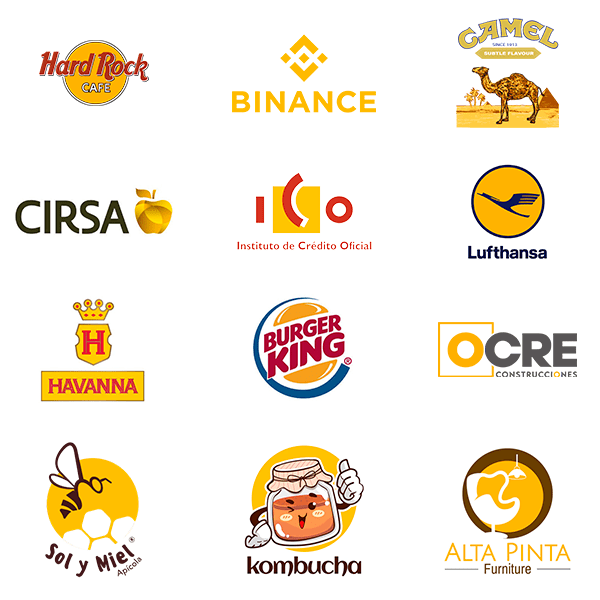
BLACK
In psychology, the color black is associated with elegance, power, sophistication, exclusivity, and luxury, but also with sadness, mystery, fear, and even death.
Associated with darkness, the cosmos and the night, it can have an ambivalent character: On the one hand, it represents romance, sensuality and nocturnal tranquility, but it is also related to danger, the unknown and evokes feelings of loneliness and sadness.
In Spanish, as opposed to "white," the word "black" has negative connotations when combined with another noun, such as black money, black sheep, black humor, black market, or black magic.
It is also related to depression and decay, as reflected in the expression “seeing everything in black”
In other cultures, such as ancient Egypt, black symbolized abundance, fertility, and growth.
In Japan, it symbolizes beauty and also wisdom, as can be seen in martial arts, where you start with a white belt and progress to the black belt, which is a higher rank.
Meanings and emotions associated with the color black
Positive
Security
Formality
Elegance
Authority
Sophistication
Luxury
Sobriety
Exclusivity
Wealth
Prestige
Negative
Coldness
Threat
Heaviness
Evil
Mourning
Fear
Darkness
Poverty
Darkness
Terror
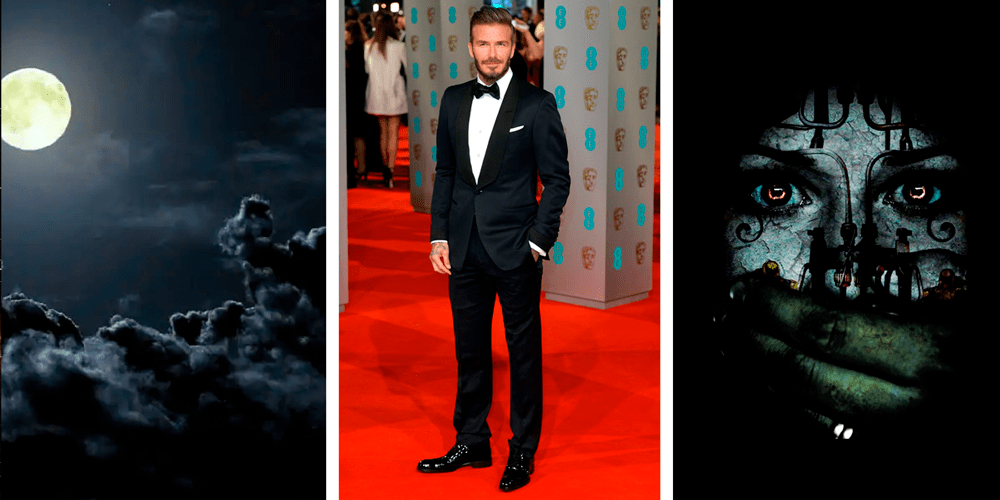
Using black in brand design
Black is the best color for the initial stage of brand design.
When a graphic designer wants to communicate a brand's concept through its shape, they always rely on the solid black version.
A logo is almost always born "in black" in the designer's imagination, and then it will take on its definitive identity traits by adding design, shape and color.
Black works well with vibrant colors to create contrast and enhance the sense of depth and perspective, and with neutral colors to achieve an elegant look.
Very different results can be obtained from the same mark on a white background and on a black background.
Due to its elegance and sophistication, black is the preferred color for premium technology brands, haute couture, luxury products or services, and elite museums and galleries.
In corporate design, black denotes power, quality, autonomy, simplicity, protection, and comfort, which is why it is frequently found in high-end automobile brands and also in exclusive jewelry and clothing products.
Lacking tonal pigments, black is a neutral color with great strength and simplicity.
It is used in minimalist designs to achieve a clean, modern look and allows attention to be drawn to the design without color distractions.
Tips
It has been proven that if a brand works conceptually in black, it will also work when applying any color palette.
The black and white version (positive or negative) of a trademark ensures legibility at any size and on any printing medium or technique, whether color or monochrome, so it's essential to include it in the trademark's user manual.

Some brands that choose black as their corporate identity color
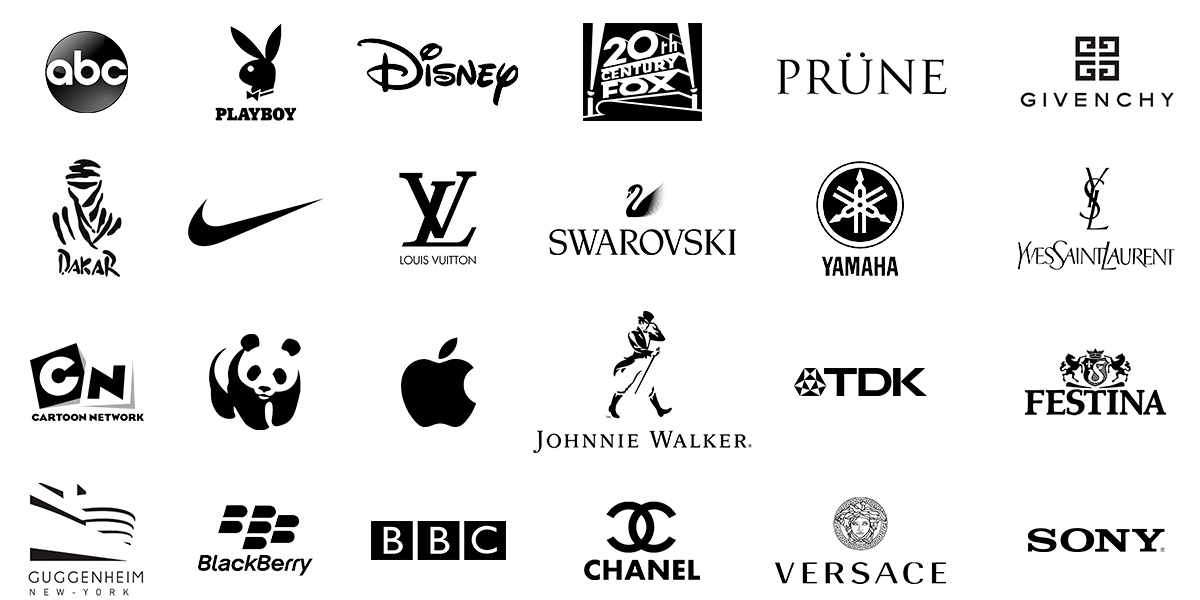
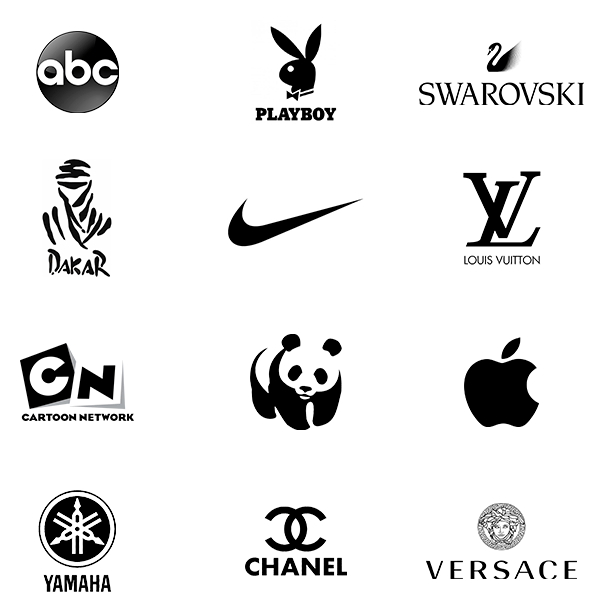
WHITE
White is the default color that represents nothingness itself, but at the same time it is an invitation to creation and to get moving, since everything begins with a blank sheet or canvas.
Due to its direct association with paper, it is commonly used as a background to highlight other colors and to create minimalist designs that allow the elements that compose it to take center stage.
It evokes feelings of purity, cleanliness, simplicity, innocence, peace, serenity and calm.
It can also convey a sense of space, spaciousness and sophistication.
White allows you to "breathe" and rest your eyes to focus on what really matters.
In some contexts it can be associated with coldness, sterility or lack of inspiration.
The color white represents the sum of all colors and is one of those cases in which you can have very different perceptions depending on your geographical culture.
For the West, it represents purity, goodness, light, or simplicity, aspects that are considered positive and that contrast with the vision of mourning and death that it represents in the East.
That's why, as with most colors, the cultural context in which it will be applied must be taken into account.
Meanings and emotions associated with the color white
Positive
Innocence
Purity
Peace
Cleanliness
Simplicity
Neatness
Impeccability
Virginity
Minimalism
Brightness
Negative
Sterility
Emptiness
Simplicity
Cautious
Distant
Immaculate
Boredom
Absence
Forgetfulness
Blockage

Using white in brand design
There are brands that have chosen to display their logos in white on backgrounds of other shades, whenever possible, such as Adidas.
It is also used to display the brand in its monochrome version on darker backgrounds, and even as a semi-transparent watermark on photographs.
White is associated with purity, innocence, and cleanliness, but also with coldness, sobriety, and sterility.
While these aspects can be perceived as negative, they are not in medical or high-tech environments and products, where the color is intended to evoke precisely that.
The concept of immaculate, soft, and sparkling white is widely used by hygiene and cleaning product brands, as the foam in soaps and detergents is white and emphasizes the concept of cleanliness.
Due to its simplicity and versatility, white is used to create clean, uncluttered, and modern designs, conveying a sense of order, clarity, space, and spaciousness.
It is very well applied in minimalist designs that seek functionality and elegance.
We find it in many online stores of prestigious brands that need to focus attention on their products without distractions, where large white spaces abound that frame high-quality images.
White can also denote sophistication, elegance, luxury and exclusivity, especially when combined with colors such as gold, silver or black, and is ideal for packaging designs for major technology brands and premium products, where "belonging" is a privilege.
In some contexts, white can be perceived as boring, bland, or impersonal, but this can be very favorable for products or services that want to maintain a neutral or generic appearance without being pigeonholed into a particular sector.
Tips
We must clarify that not all brands work well in negative (white) on dark backgrounds, since some generate shapes that can make it difficult to read the logo, and even change its meaning.
It is advisable when designing a brand to make sure that it works perfectly in black and white, devoid of any other color, to ensure that it can be applied to any graphic support, video and print media.

Some brands that choose white as their corporate identity color
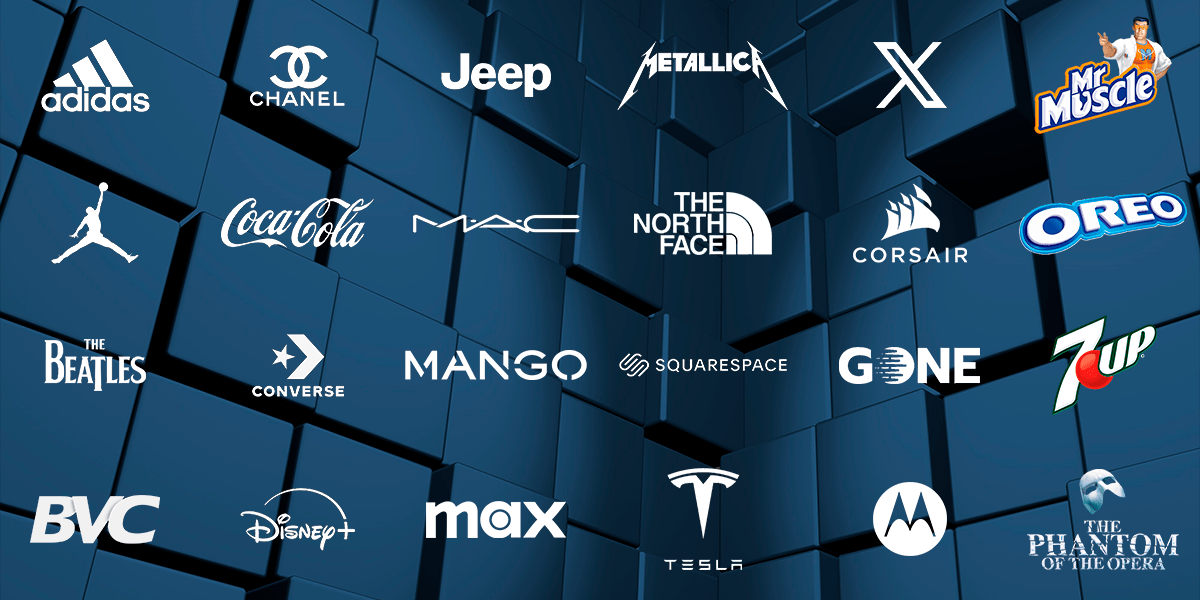
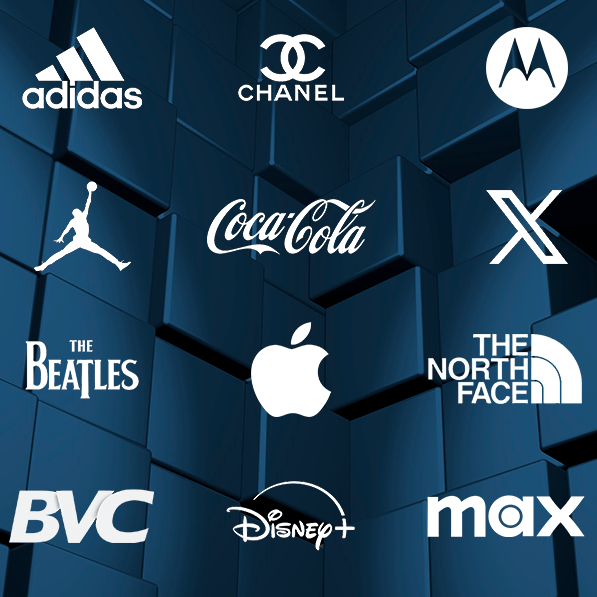
GRAY
Gray is often associated with elegance, sophistication, and neutrality, factors that are very appropriate when creating a brand with character.
It is the neutral color par excellence, devoid of any tint that does not belong to the intensity gradations of black.
It is this neutrality that allows it to be combined with a large number of colors, whether vibrant, muted, or with other neutral tones.
It also allows you to add small doses of other dyes to create warmer or cooler grays, without losing their neutral essence.
It's a tone lacking in personality that can convey professionalism and seriousness, but can also evoke feelings of sadness or coldness, as needed.
This color is associated with a lack of natural light, evoking cloudy or stormy days and can create atmospheres of intense drama.
Grayscale is a key element used in photography and art to create light and shadow effects, as well as to convey emotions and atmospheres, and effectively.
We know that the degrees of luminosity of all the colors of the spectrum are represented in shades of gray.
Meanings and emotions associated with the color gray
Positive
Neutrality
Elegance
Sophistication
Professionalism
Seriousness
Calm
Serenity
Metallic
Opulence
Wealth
Negative
Sadness
Pessimism
Helplessness
Lack of motivation
Coldness
Dirtness
Storm
Dissatisfaction
Depression
Emptiness

Using gray in brand design
Gray can be applied in its various shades, almost in the same way as the white and black we mentioned above, since gray encompasses the intermediate tones between both colors.
That's why when we talk about black and white photos, we're actually talking about grayscales,
Any brand designed in black or white can work perfectly in gray, depending on the context in which they are applied.
Its versatility allows it to be used in both luxury brands and minimalist designs.
This color can bring an air of refinement and distinction to a design, especially in its darker shades.
In the corporate world, gray conveys confidence and stability and is ideal for companies seeking to project an image of seriousness and professionalism.
Lighter shades of gray can create a sense of calm and tranquility, making them suitable for designs that seek to represent peace and balance. They can also be a good alternative to pure white, especially in packaging and web design.
On the contrary, if used excessively or in shades that are too dark, almost black, gray can result in a feeling of coldness, sadness, or even isolation, but it can also give a quality of elegance and sobriety.
Once again, this is an excellent option to use instead of pure black in web design, as these shades are more visible on screens and are more pleasing to the eye, making them easier to read, even with negative and small-body text.
Gray is a color that represents metals like silver, steel, and aluminum very well, and using gradient and three-dimensional effects can achieve optimal results in logo design.
This effect is widely used in companies that want to convey elegance, sophistication, and quality, such as automotive, jewelry, technology, and metalworking industries.
Gray is also associated with cement, asphalt, and stone, which is why it is frequently used to design logos related to construction, architecture, roads, and public works.
Tips
We can use gray to represent monochromatic brands on dark backgrounds or images in the same way as white, but achieving a more subtle and discreet effect.
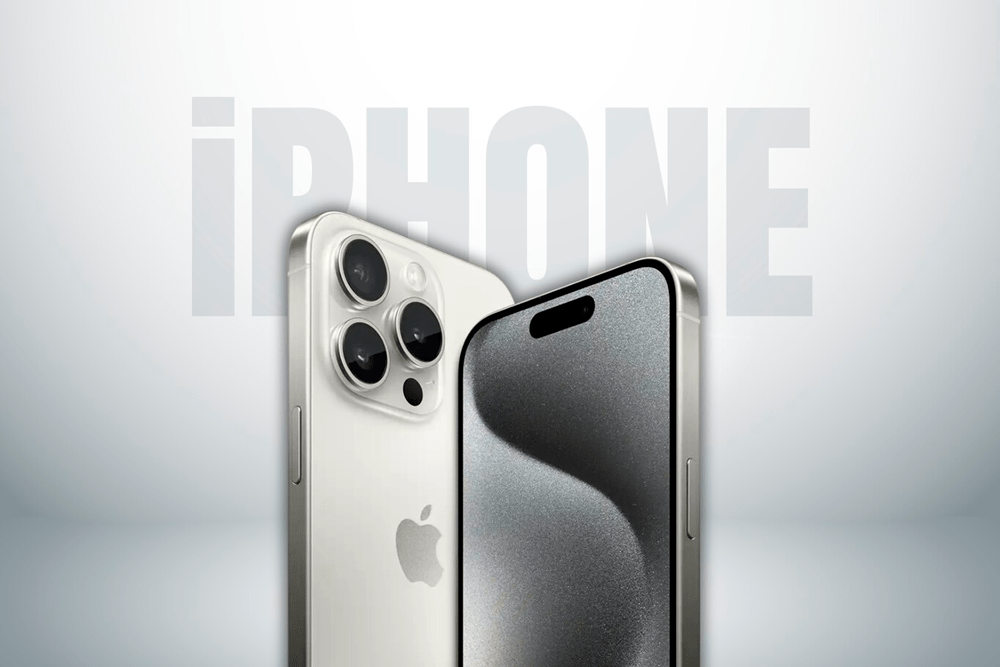
Some brands that choose gray as their corporate identity color
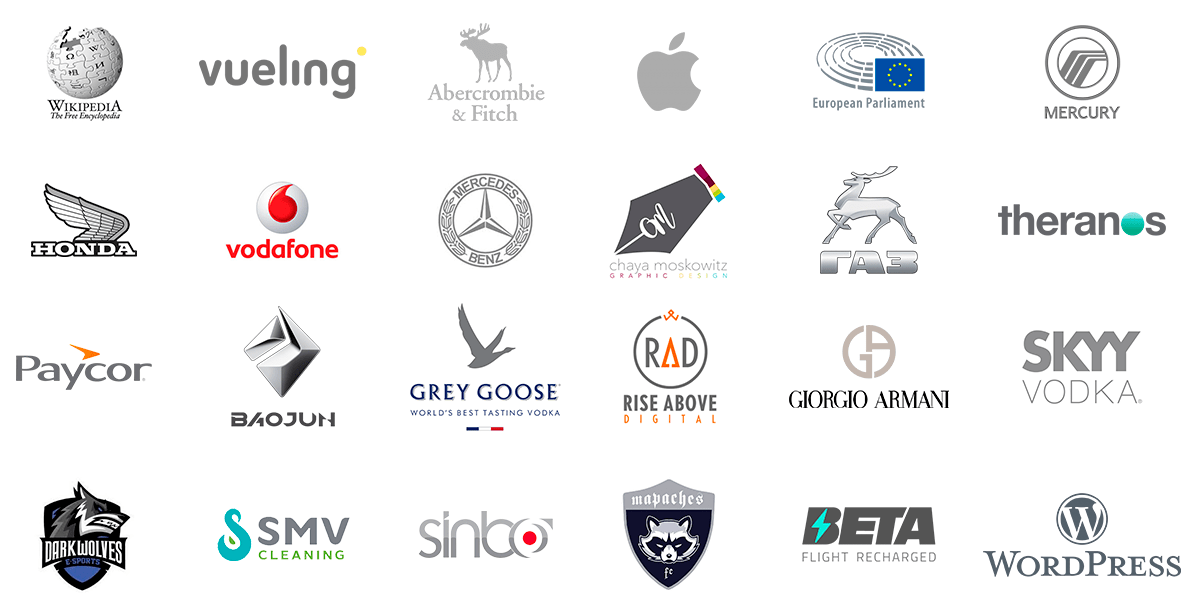
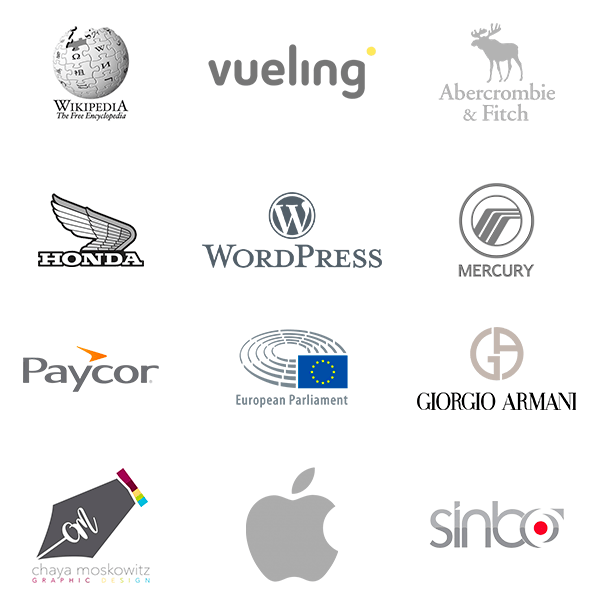
GOLD
The color gold evokes feelings of luxury, wealth, success, and sophistication.
It is associated with exclusivity and high quality, making it a popular choice for luxury brands and premium products.
In addition, it represents victory, awards (gold medal) and financial success, as it conveys the idea of abundance, money and good fortune.
Although often associated with luxury, gold can also evoke feelings of warmth, optimism, and positive energy.
However, it is important to use it sparingly, as excessive use can be perceived as ostentatious or pretentious. Excessive use can create a sense of vulgarity if not used in the context of the brand and target market.
Gold is a special group of metallic colors, along with silver and copper, and comes from mineral pigments obtained from gold and bronze.
For this reason, it is a color that does not exist in the chromatic spectrum and can only be represented (in inks or on screens) by similarities to other tones such as ochre, brown, yellow and orange, which, when applied to graphic design, will depend on the context and the shape and meaning of the design.
For example, if we look at the Rolex logo, the crown is brown, but we perceive it as gold because of its shape and because culturally we associate a royal crown with wealth and gold, and also because we know that it is a luxury watch brand.
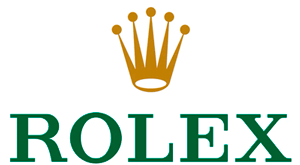
Meanings and emotions associated with the color gold
Positive
Luxury
Exclusivity
Trust
Brilliancy
Quality
Achievement
Elegance
Delicacy
Success
Optimism
Negative
Extravagance
Waste
Greed
Arrogance
Discrimination
Antiquity
Solemnity
Vulgarity
Elitism
Despotism
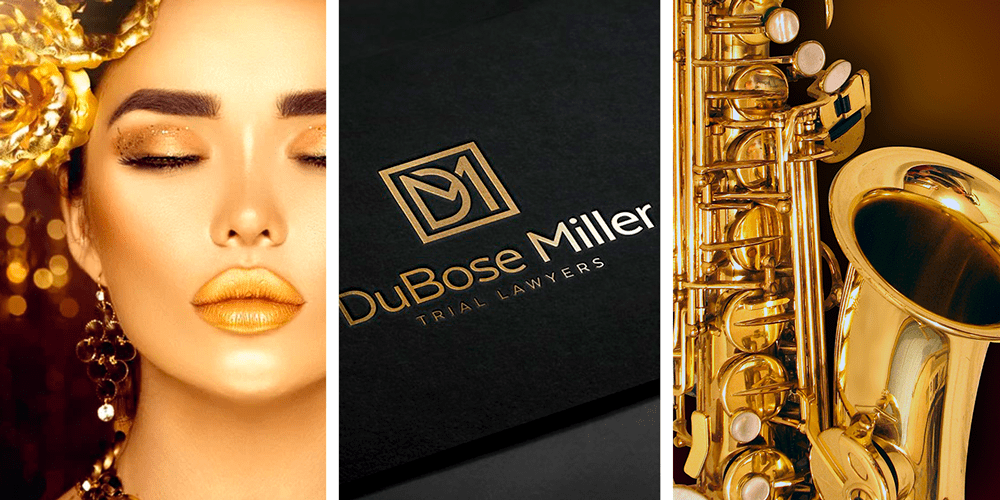
Using gold in brand design
Many designers use gold in their logos to convey a sense of sophistication and exclusivity.
Gold expresses confidence and is associated with high-end brands and products that seek to convey an image of prestige, value, luxury, and exclusivity.
It is used in advertisements to highlight important events or product launches targeted at a select audience.
Golden tones work very well as a complement to other colors such as black, white, cream, and neutral tones, when applied to details that require subtle highlighting.
Combining it with vibrant colors like red or blue can result in a less elegant, but still effective, effect.
The choice of typography and graphic design shapes is very important when applying this color, as it does not work the same way in every graphic environment.
Like other metallic shades, it is excellent for the application of corporate logos and marquees, as well as in the design of emblems, badges, medals, and trophies.
Tips
Metallic colors are perceived differently, and are generally represented with gradient tones of similar colors simulating metallic reflections.
Many brands choose to emulate three-dimensional designs to reinforce the metallic concept.
Printed products such as packaging and cards require a special ink with metallic pigments and are applied in a separate color channel. Their sophistication and elegance can be enhanced by applying subtle embossing effects using the dry die technique.

Some brands that choose gold as their corporate identity color
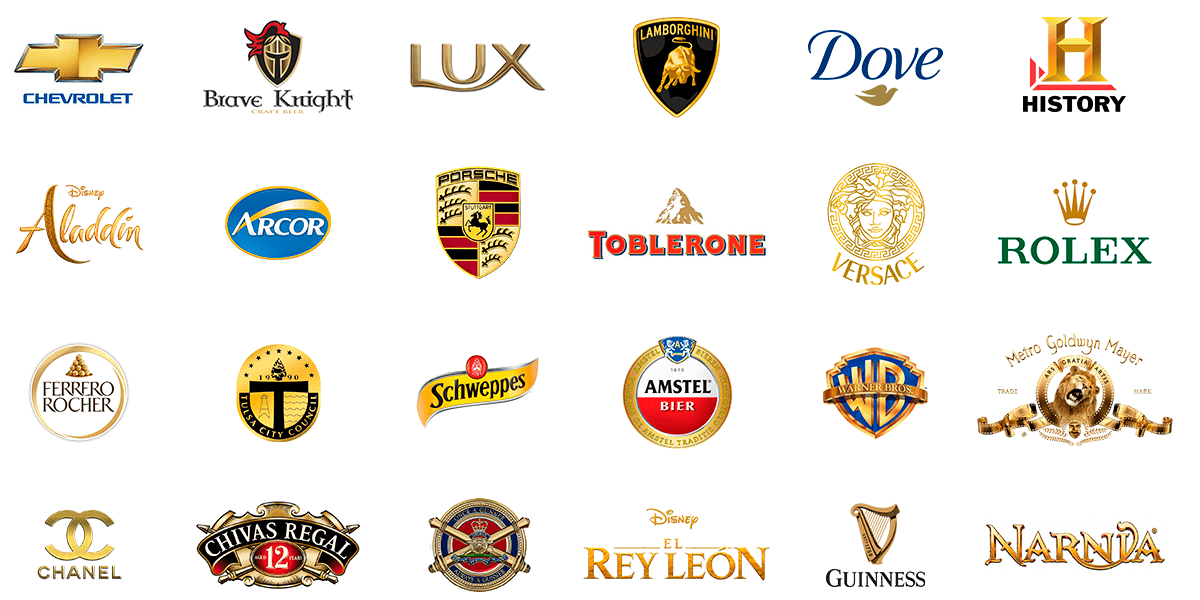
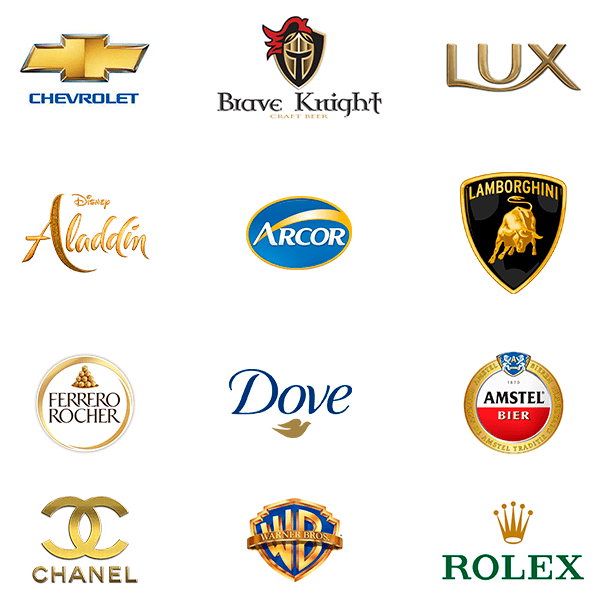
SILVER
The color silver evokes feelings of sophistication, technology, modernity and luxury.
Although less pretentious than gold in terms of its exclusivity and high value, silver has great versatility in its design applications.
It can convey innovation, elegance, and a touch of distinction, making it a popular choice for brands looking to project an image of high quality and exclusivity.
It is the color par excellence to represent colorless metals such as silver, steel, aluminum, nickel, and other polished or chrome-plated metals, and even mirrors.
As with gold and other metallic colors, silver comes from pigments obtained from various metals.
For this reason, it is a color that does not exist in the chromatic spectrum and can only be represented by similarities with shades of gray, which applied to graphic design will depend on the context and the shape and meaning of the design.
Being a precious metal, the color silver is used to highlight products and situations of relevant importance.
Meanings and emotions associated with the color silver
Positive
Luxury
Sophistication
Exclusivity
Elegance
Technology
Innovation
Stability
Creativity
Reflection
Contemplation
Negative
Coldness
Sterility
Hostility
Fear
Cleanliness
Melancholy
Loneliness
Restlessness
Despondency
Antiquity
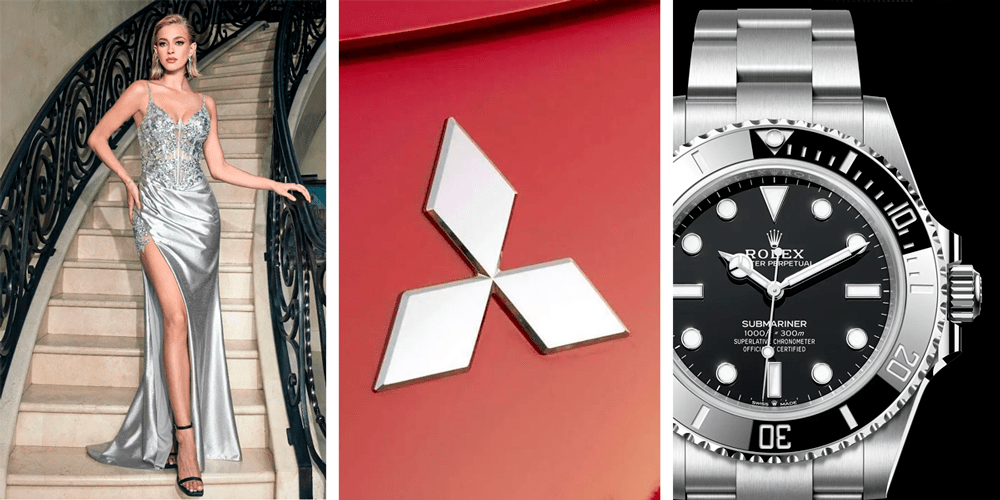
Using silver in brand design
Silver is often associated with high-end products and luxury brands, conveying a sense of modernity, innovation, and technological advancement. It is commonly used in electronics, mobile devices, and applications.
In the automotive industry, silver is presented with elegance and sophistication, especially in high-end models, and that's why it's very common to see it in the design of its brands, often with a three-dimensional and chrome effect, emulating the metallic badges of automobiles.
It can convey serenity, tranquility, and balance, making it suitable for brands seeking to generate trust and security, as well as for museums and cultural and religious entities.
Silver works very well as a complement to other colors such as black, gray and white, cream and neutral tones.
In contrast to gold, silver is a neutral tone and favors combination with vibrant colors such as red, burgundy, or blue, and can result in a very elegant effect.
The choice of typography and graphic design shapes is very important when applying this color, as it does not work the same way in every graphic environment.
Like other metallic colors, it is an excellent choice for applying corporate logos and marquees.
Silver is used in packaging design for luxury products and products that seek to stand out for their exclusivity.
Tips
Metallic colors are perceived differently, and are generally represented with gradient tones of similar colors simulating metallic reflections.
Many brands choose to emulate three-dimensional designs to reinforce the metallic concept.
Printed products such as packaging and cards require a special ink with metallic pigments and are applied in a separate color channel. Their sophistication and elegance can be enhanced by applying subtle embossing effects using the dry die technique.

Some brands that choose silver as their corporate identity color
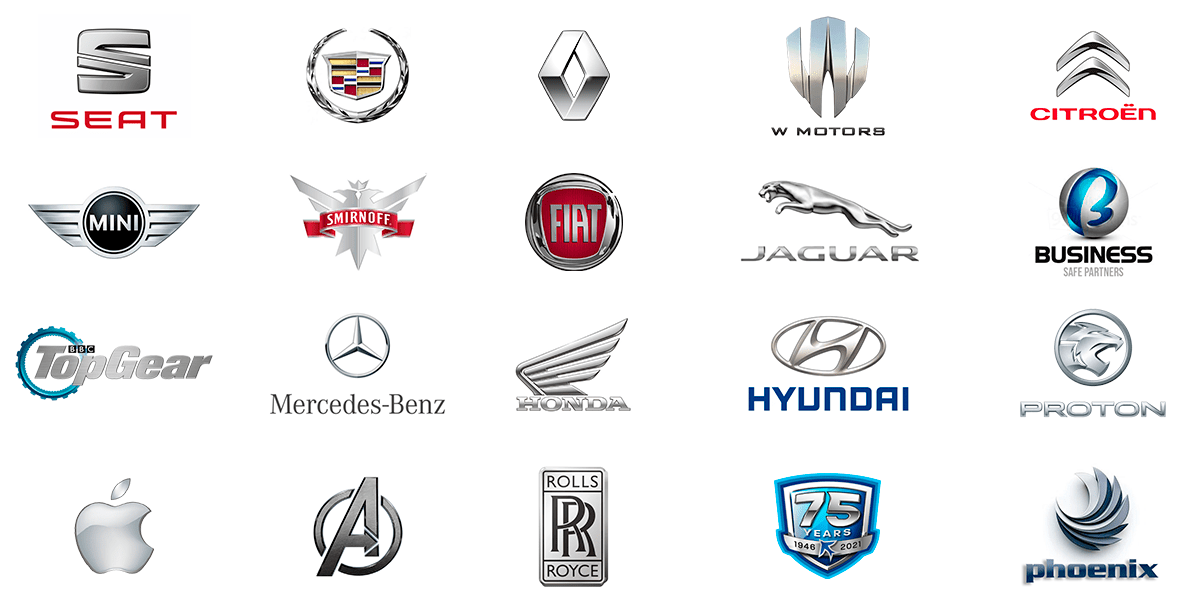
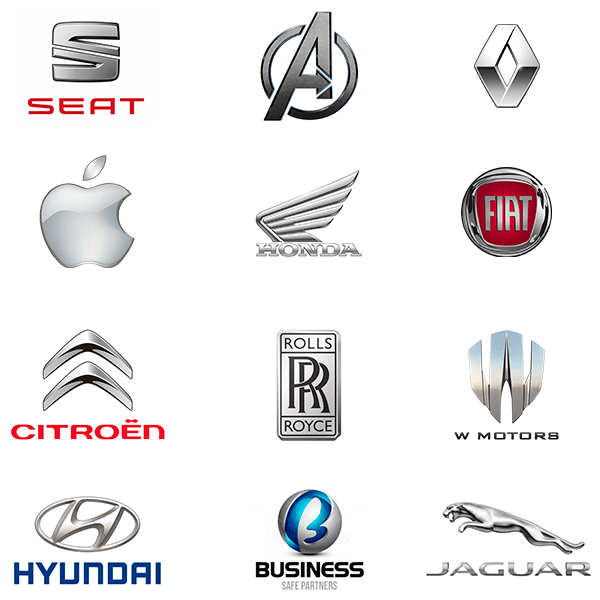
Final conclusion
This has been a long post, but very enjoyable and easy to read and understand, and I believe its length is worthwhile so that you can have a complete and exemplified idea of the topics covered.
I hope you enjoyed this article and understood the importance of applying color psychology to logo design and the possibilities it opens up.
We have browsed a wide palette of colors and perceived their characteristics, qualities, and most common uses, but above all, we have learned about their emotions and sensations.
We must not forget that designing a logo is always about creating "identity" and that we can take advantage of countless possibilities that, when applied with professional judgment, enhance our work as designers and result in efficient and satisfactory creations.
If you wanted to have your own brand and you consider that I am a suitable professional, do not hesitate to contact me.
In the Related Posts section below, you will find some articles with specific topics that complement the one you just read.
I invite you to read them, share them and leave your comments if you wish.
Thank you very much.



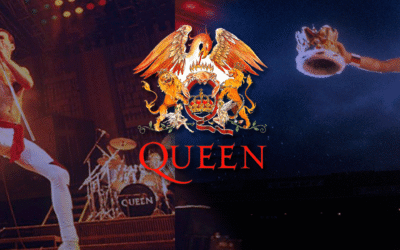
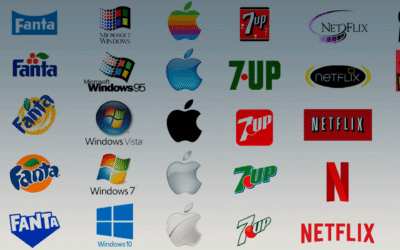
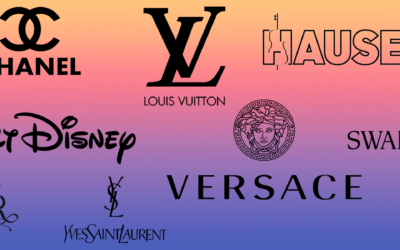

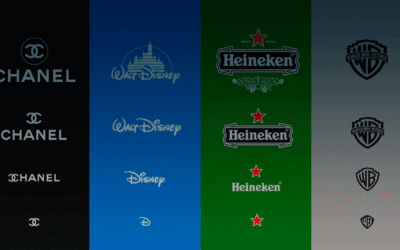
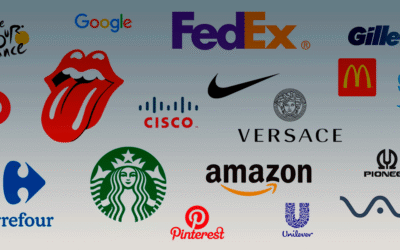
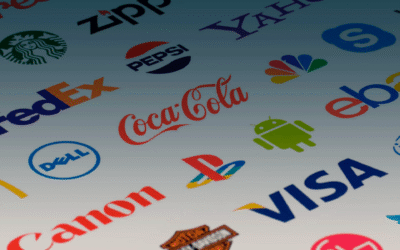
Todos tus trabajos son siempre excelentes
Muchas gracias por compartirlos
Impecable trabajo colega
Enhorabuena
Me gustan mucho todos tus artículos y la manera en que los expones es muy clara y amena
Muchas gracias
Muchas gracias Borja